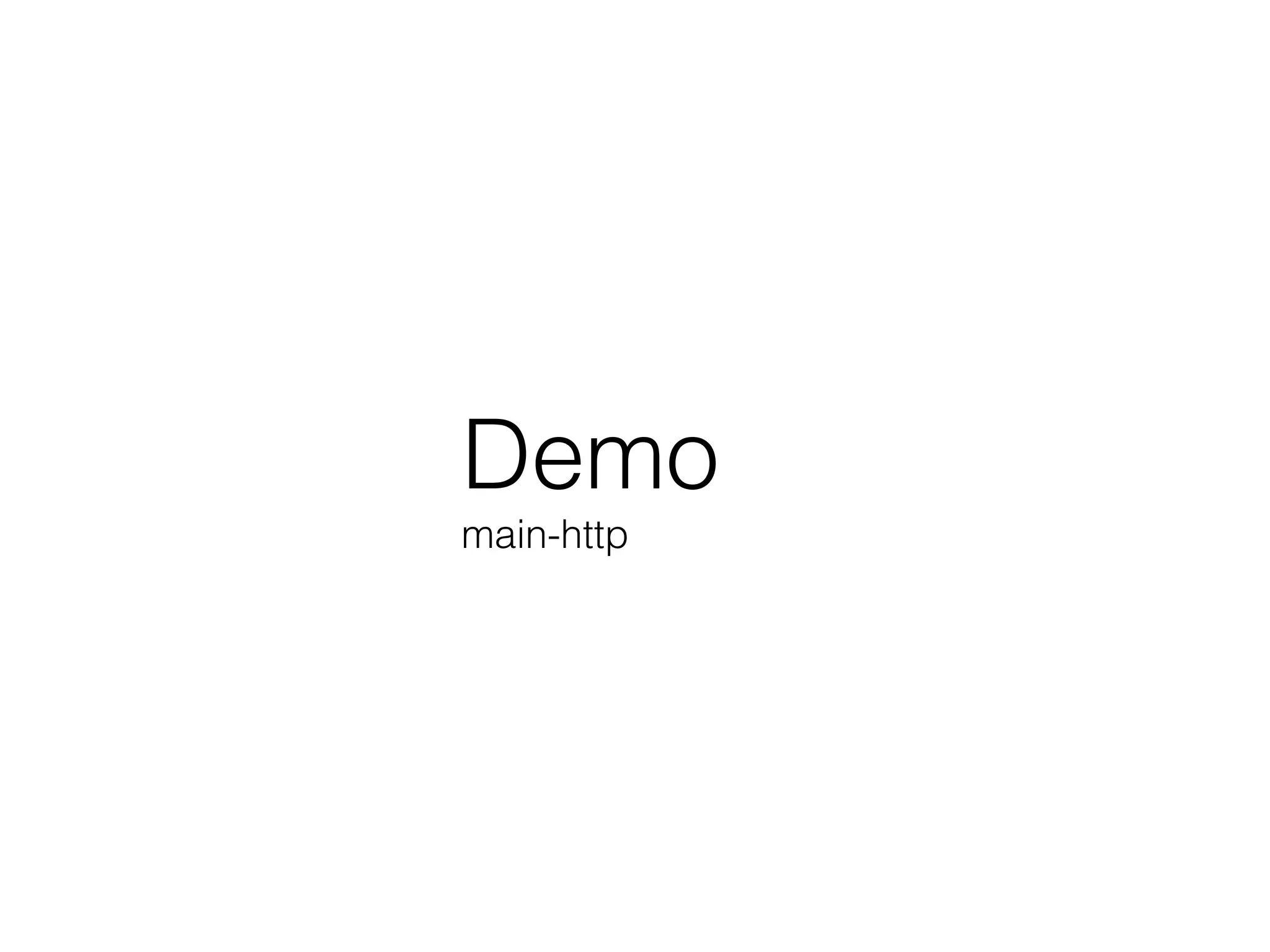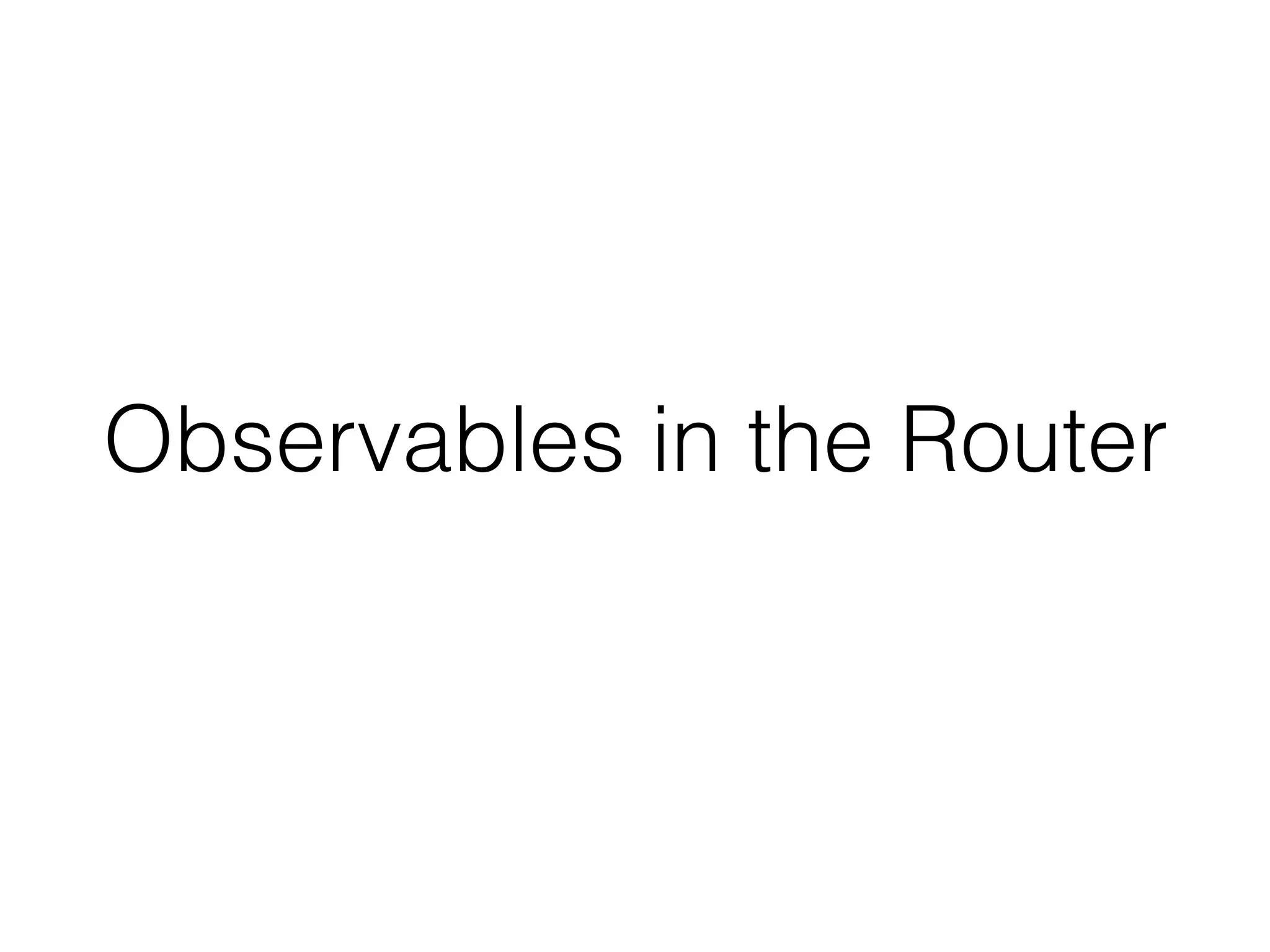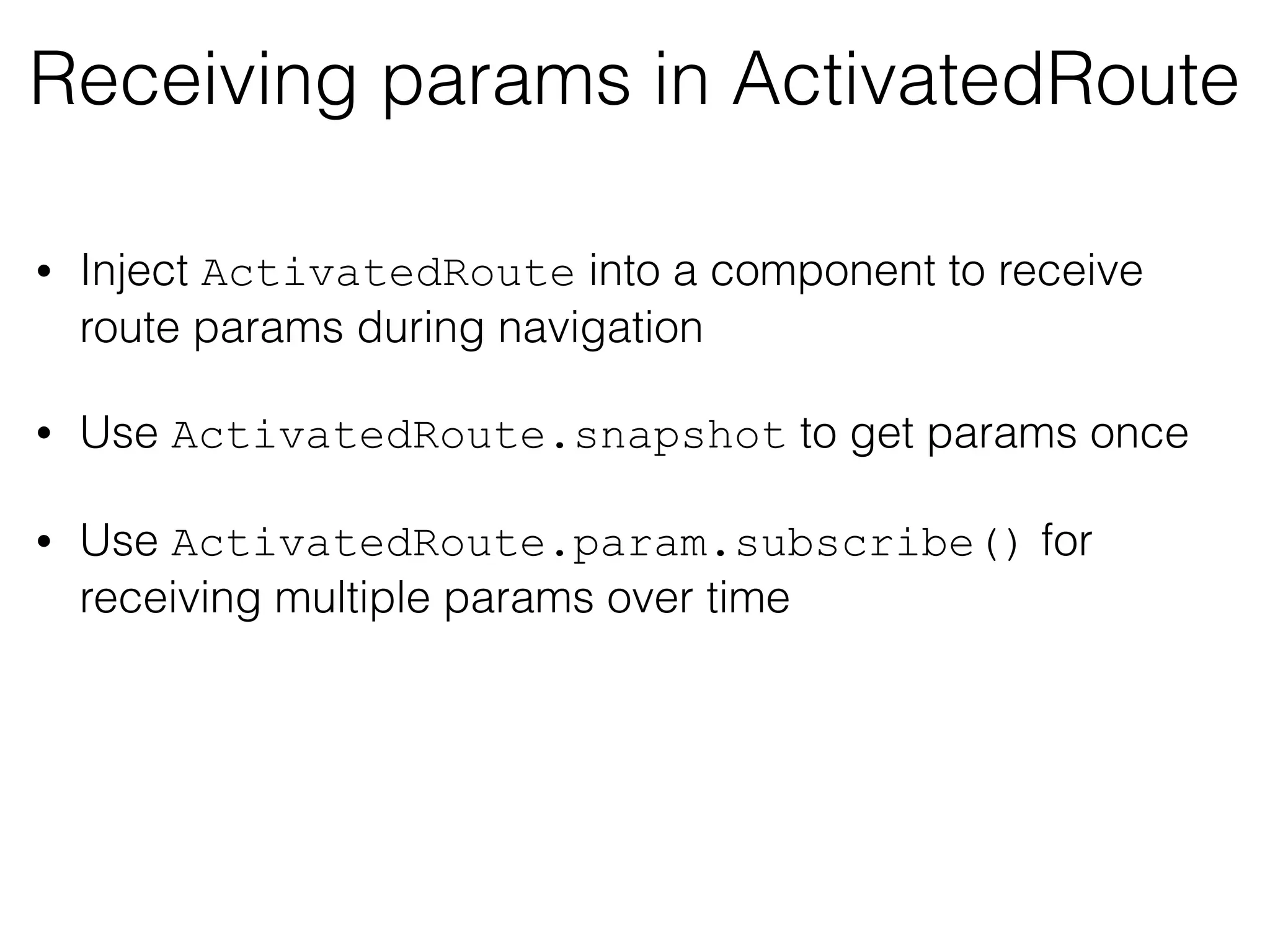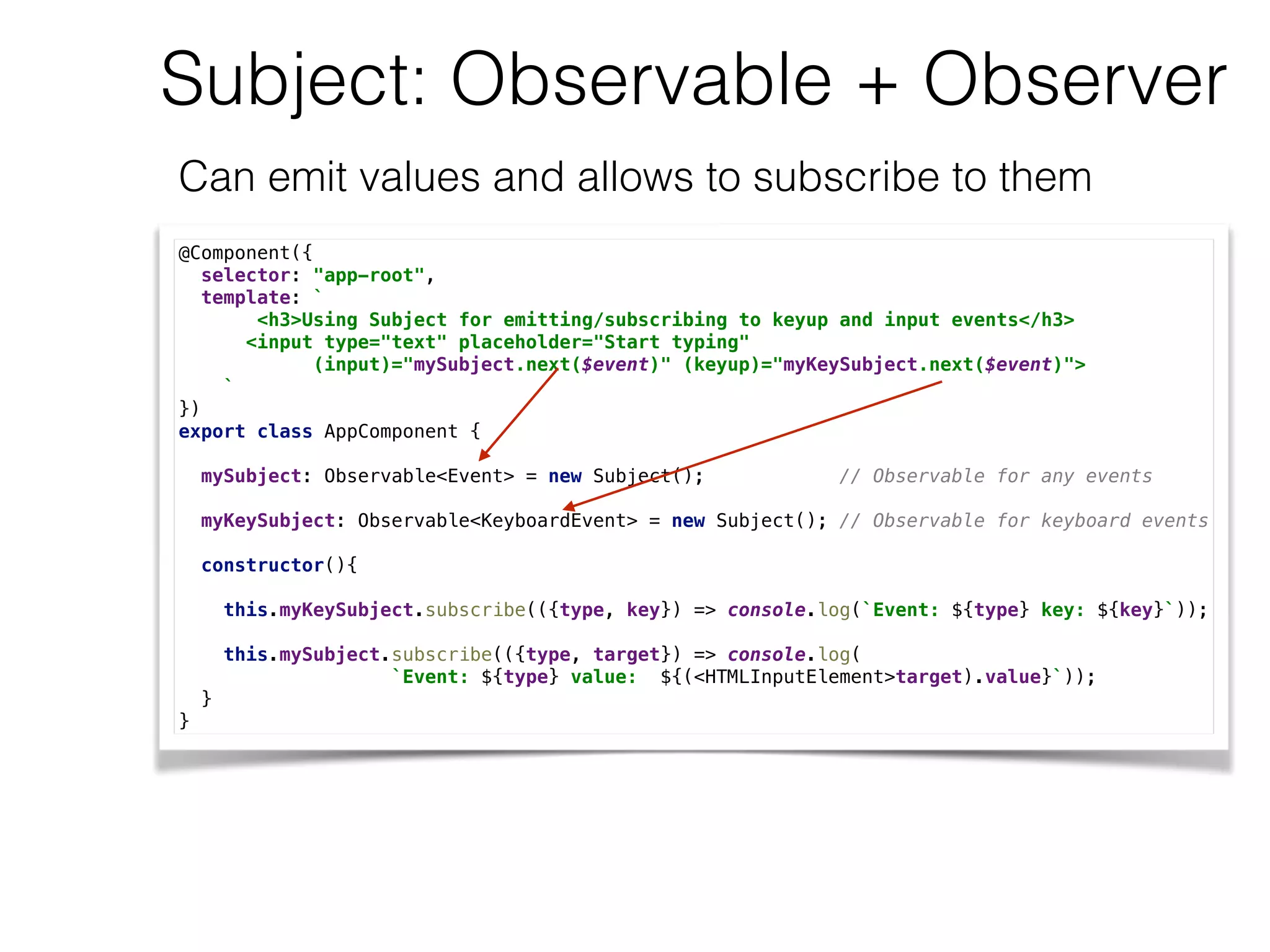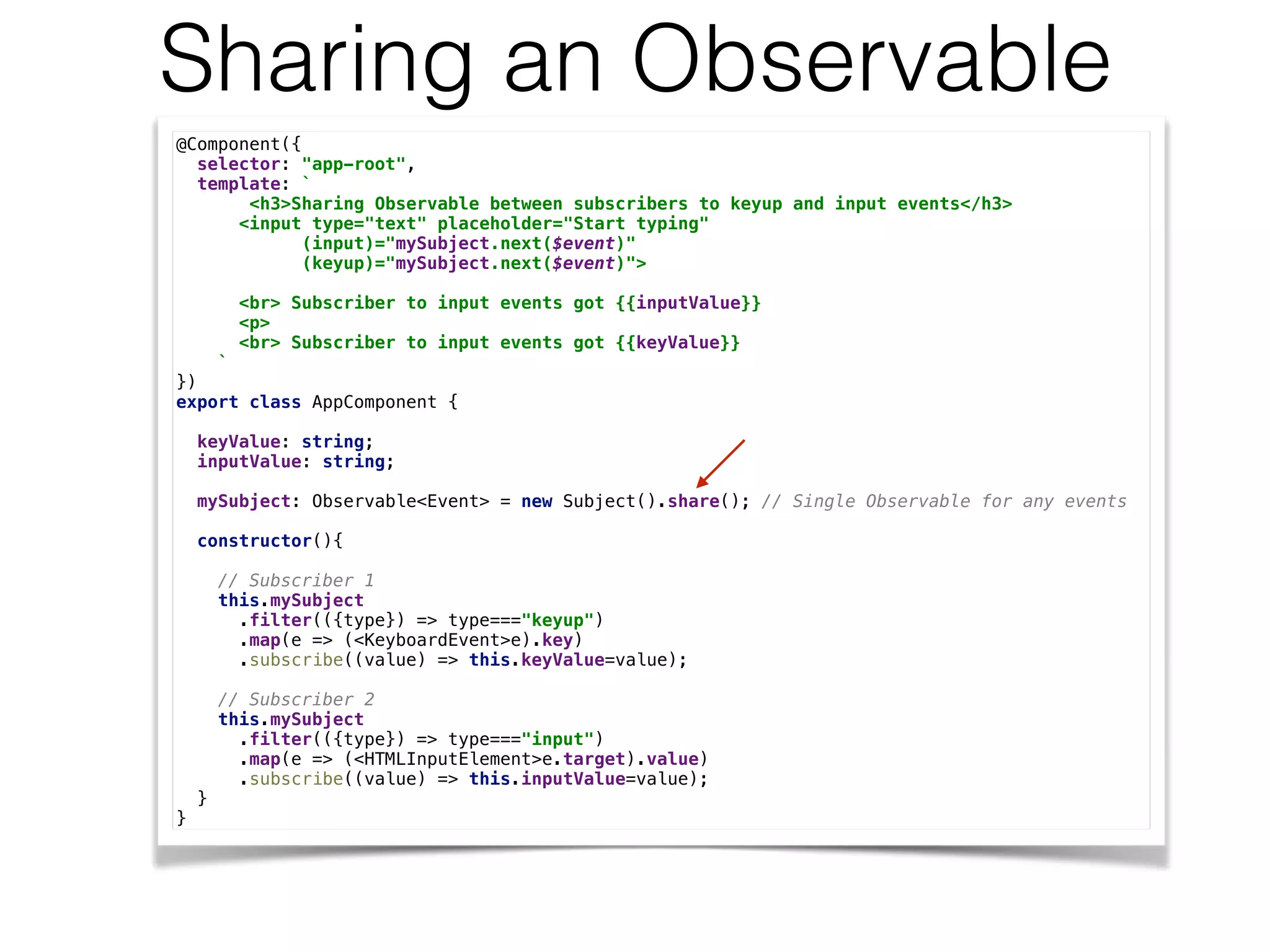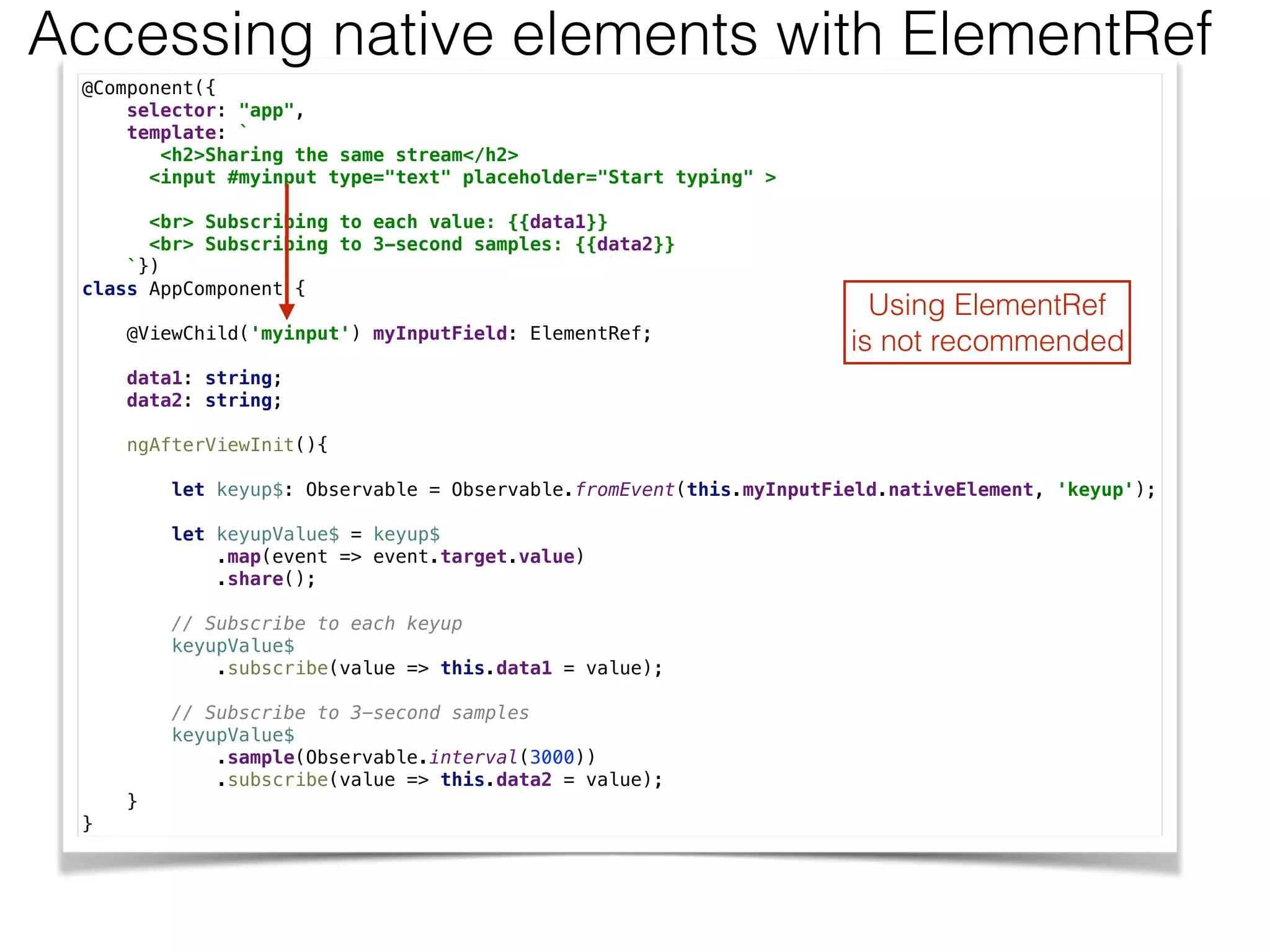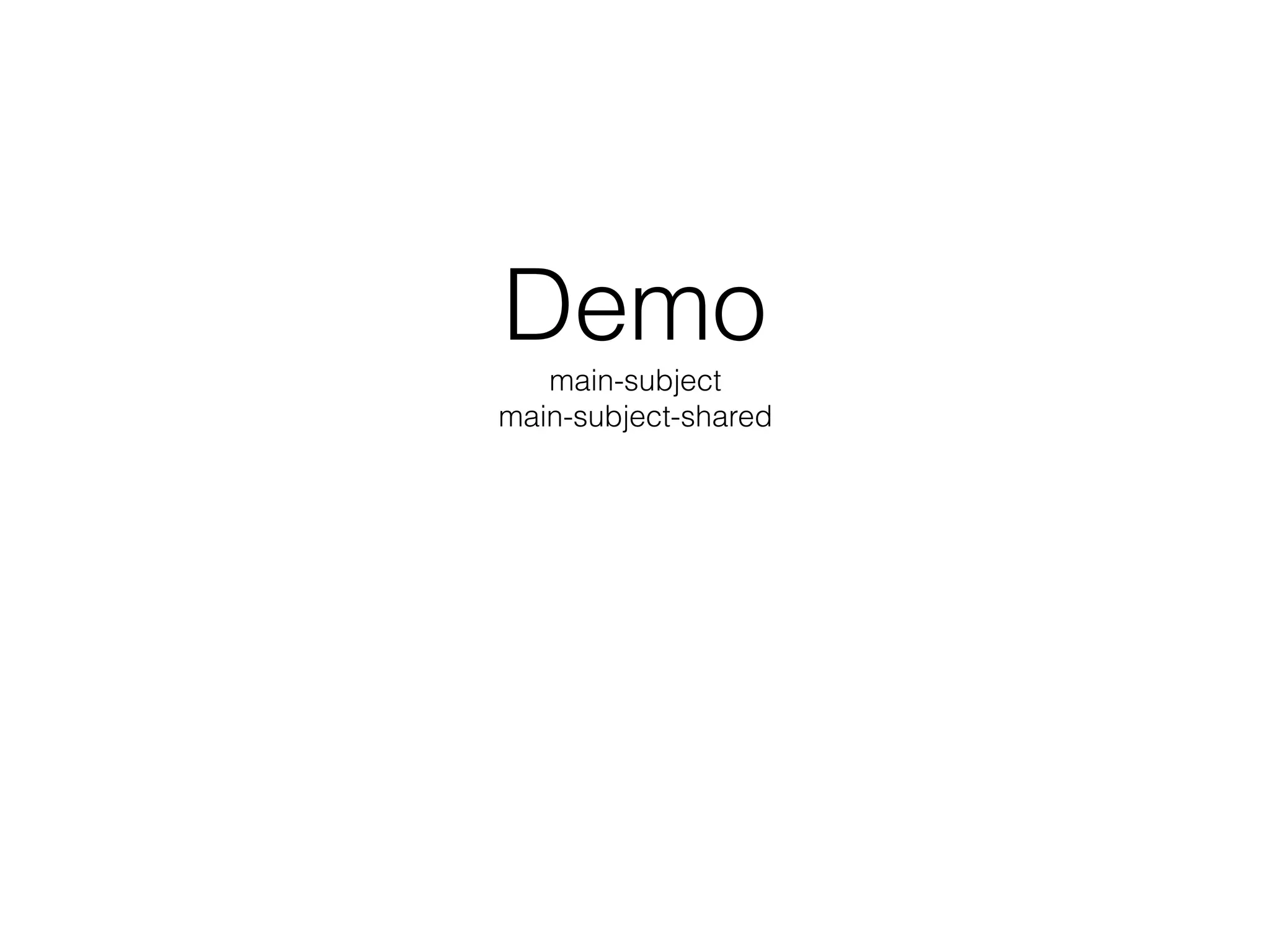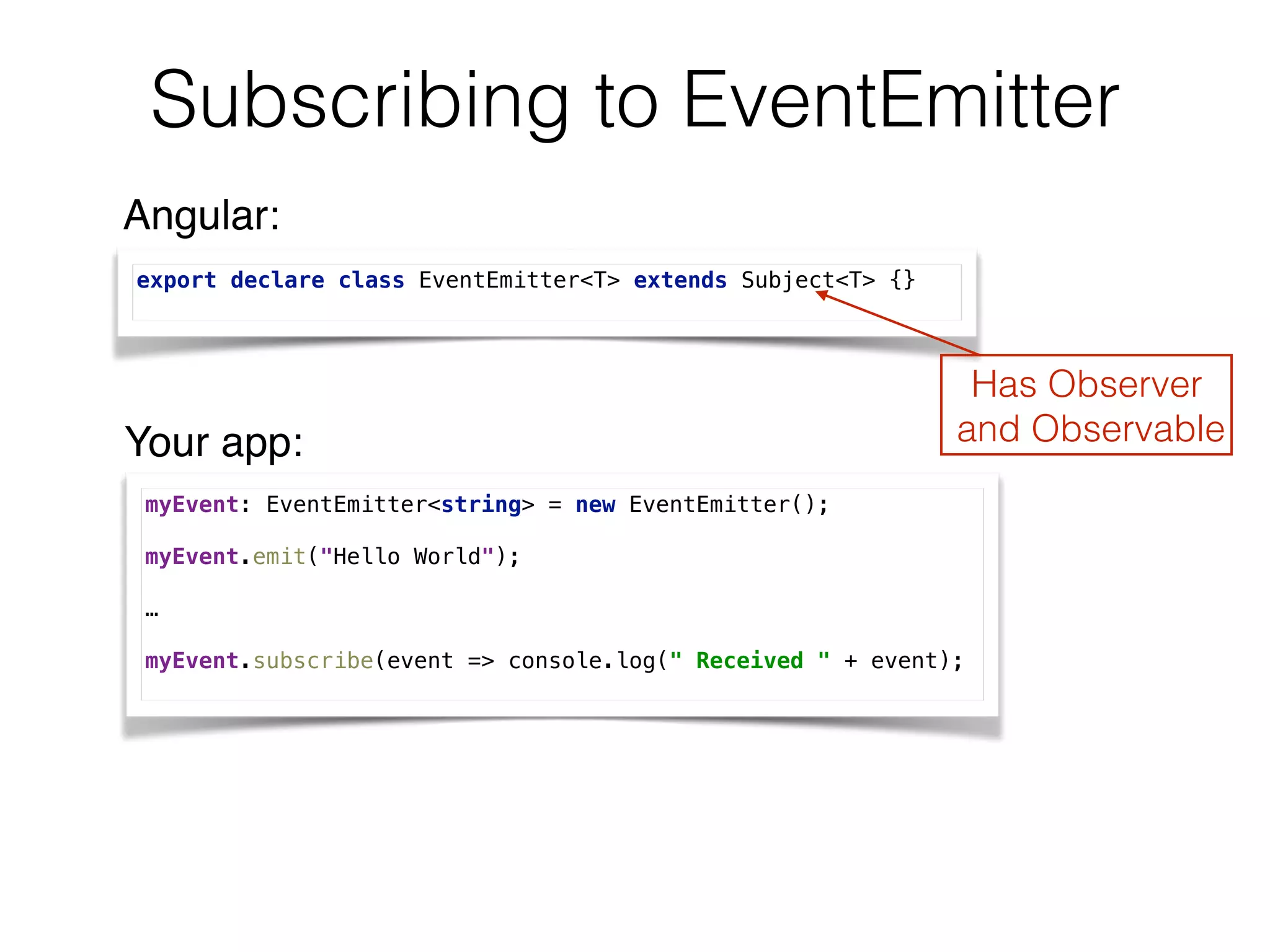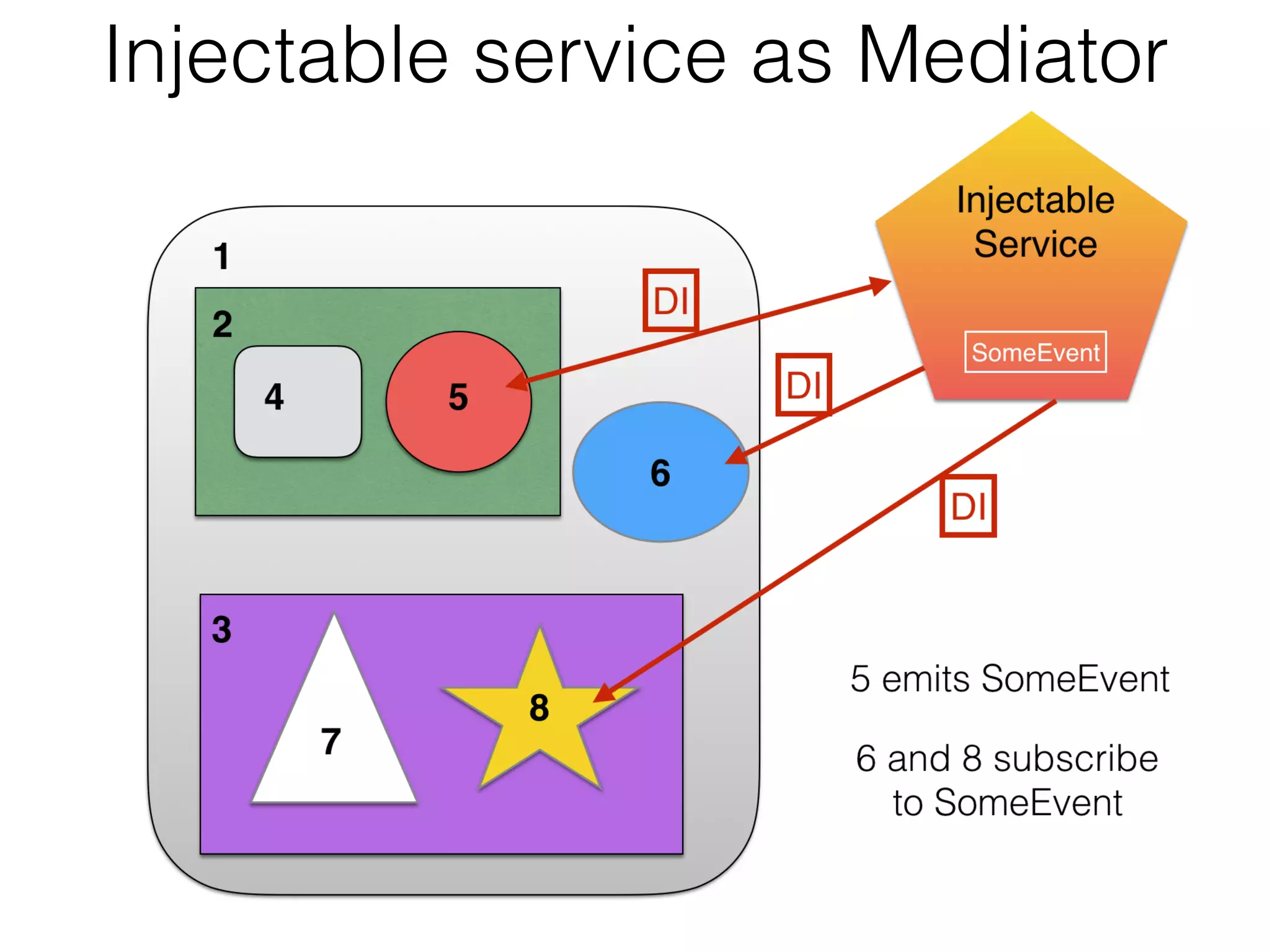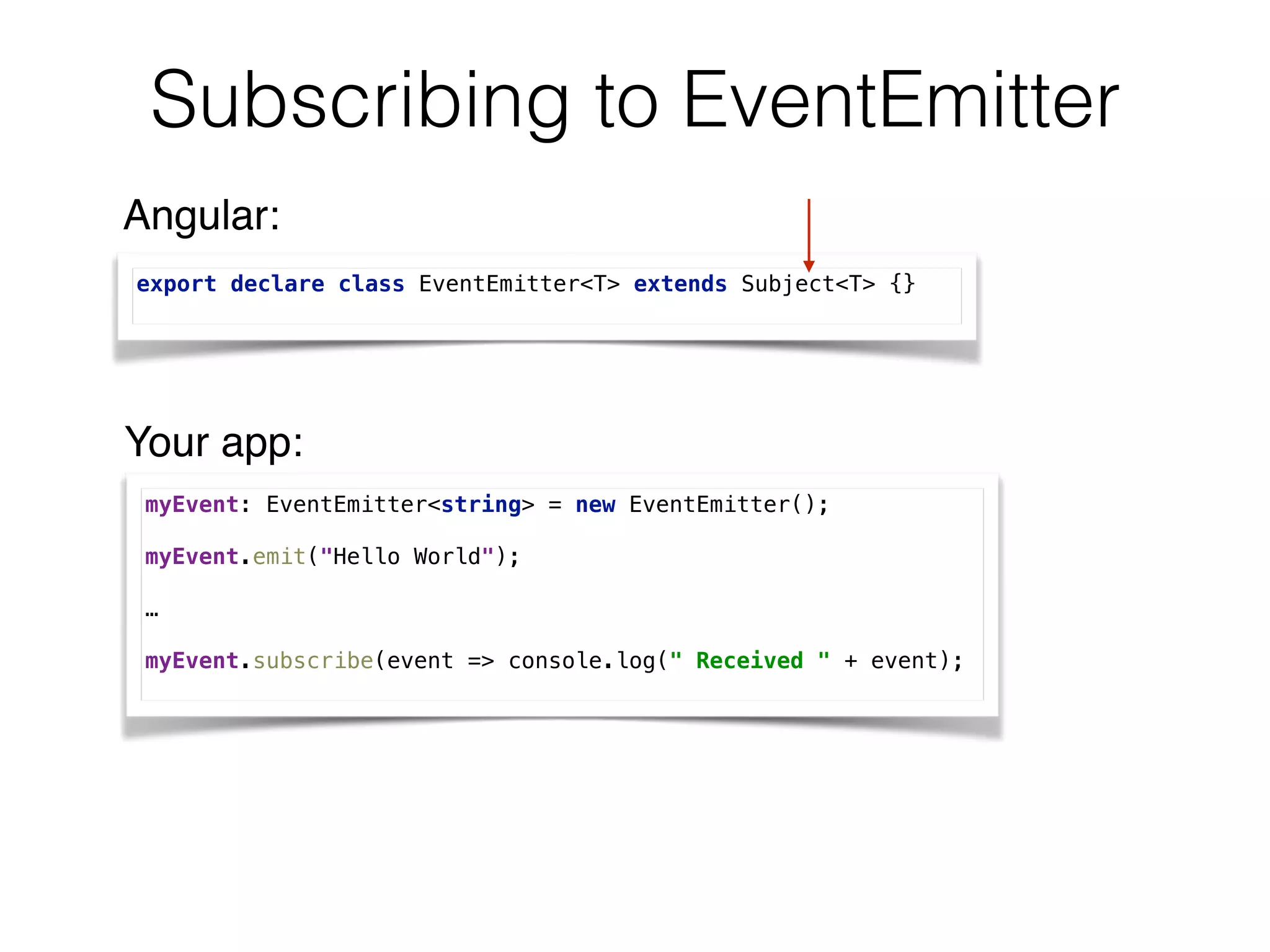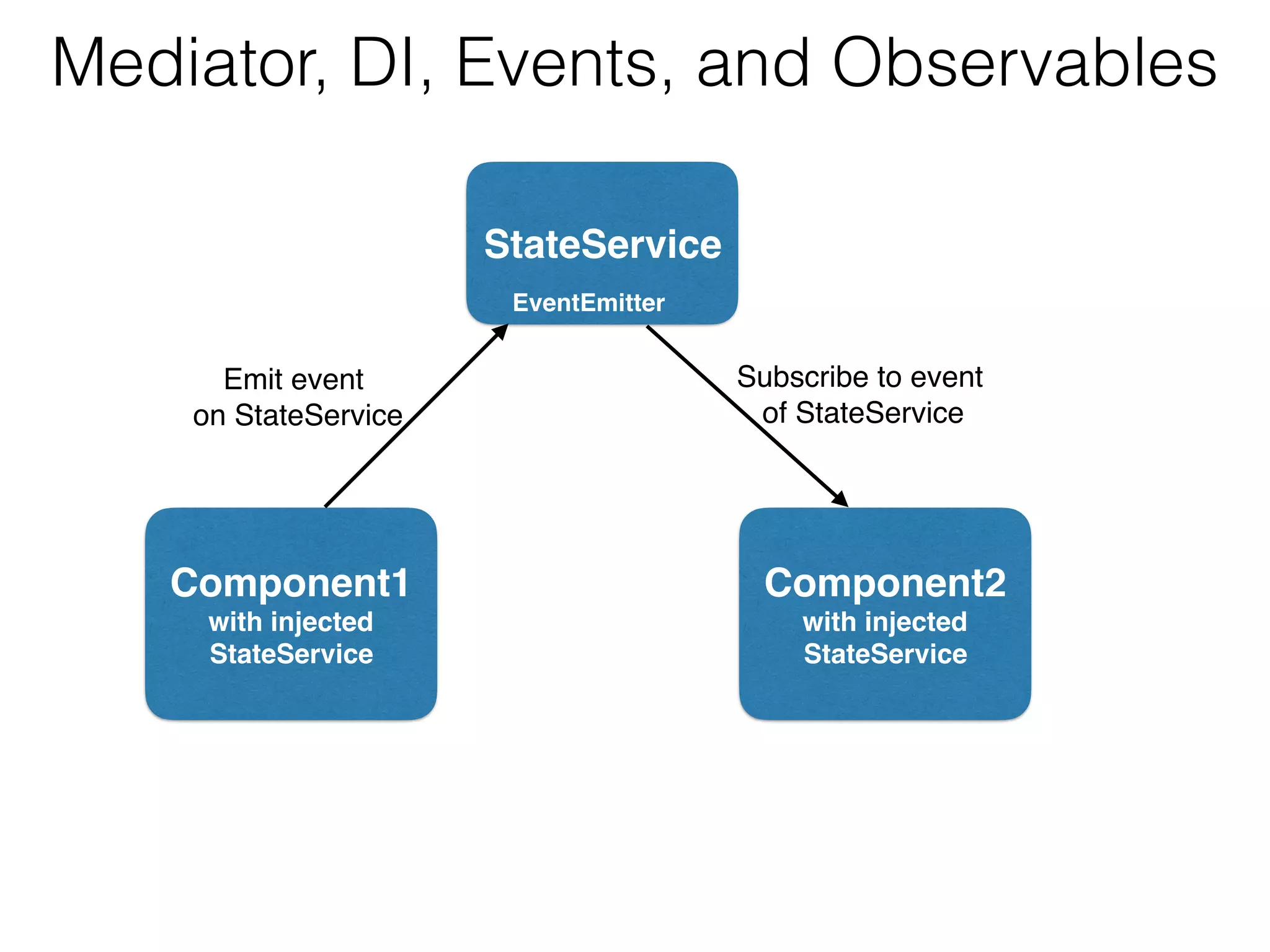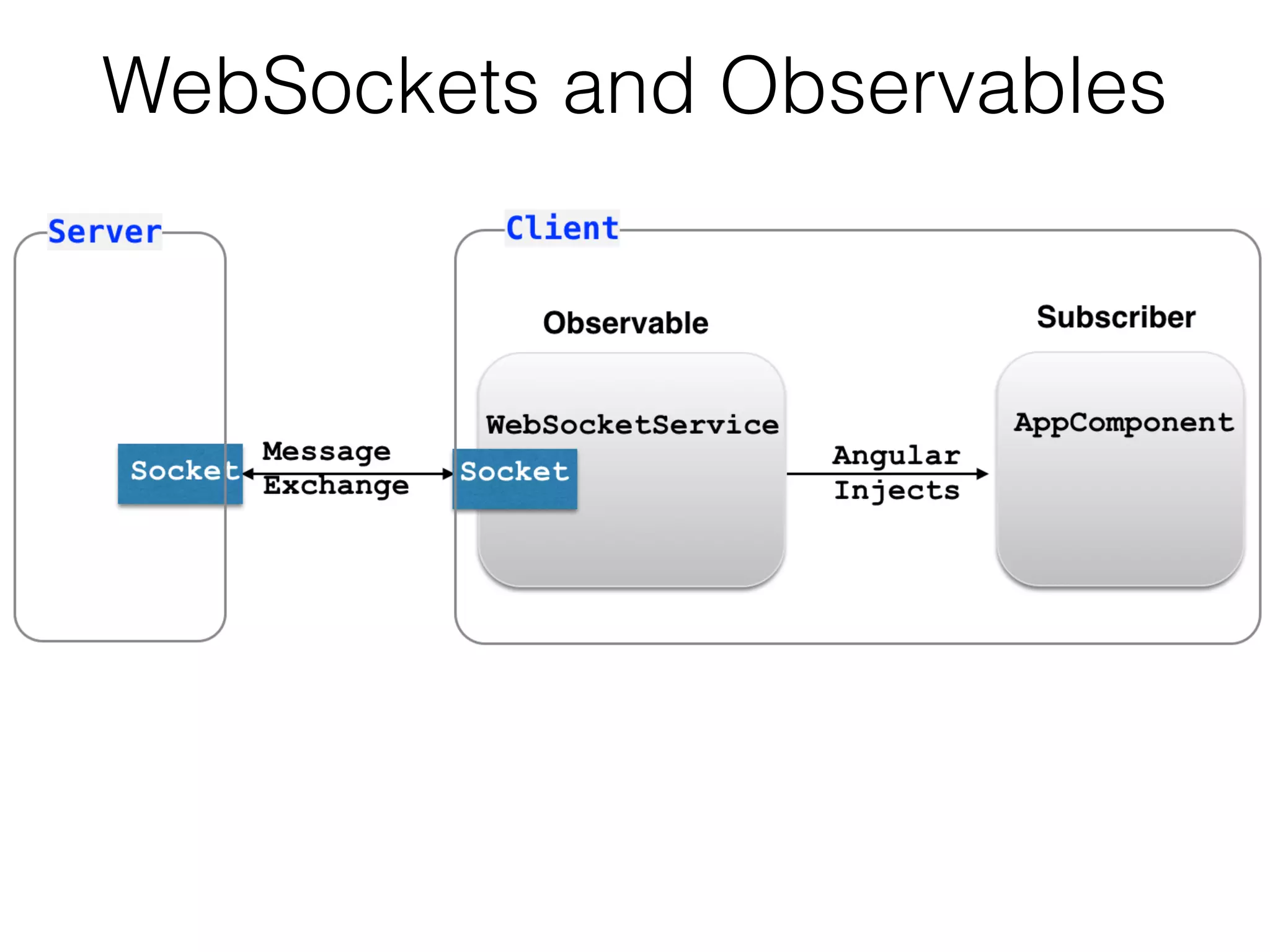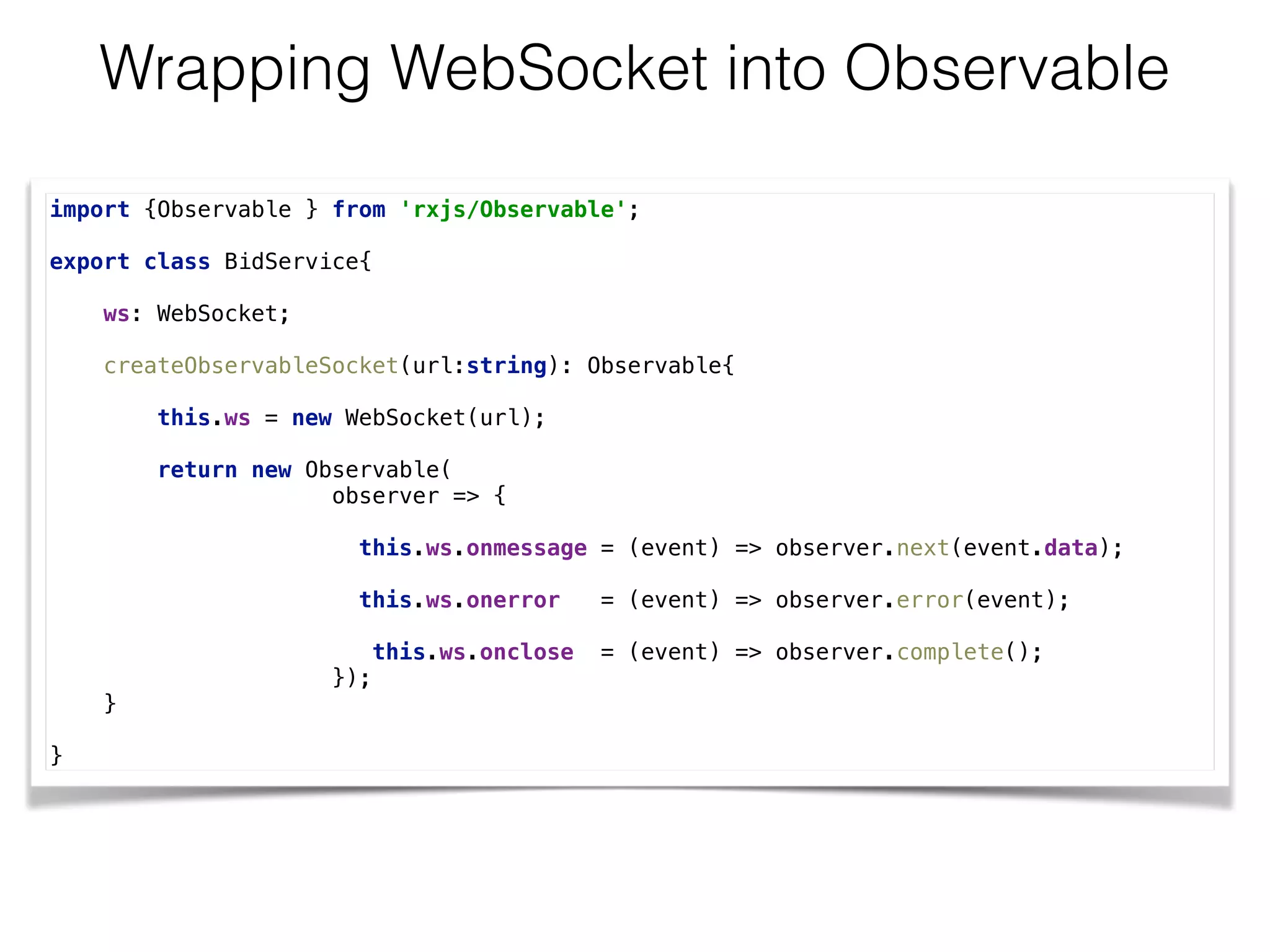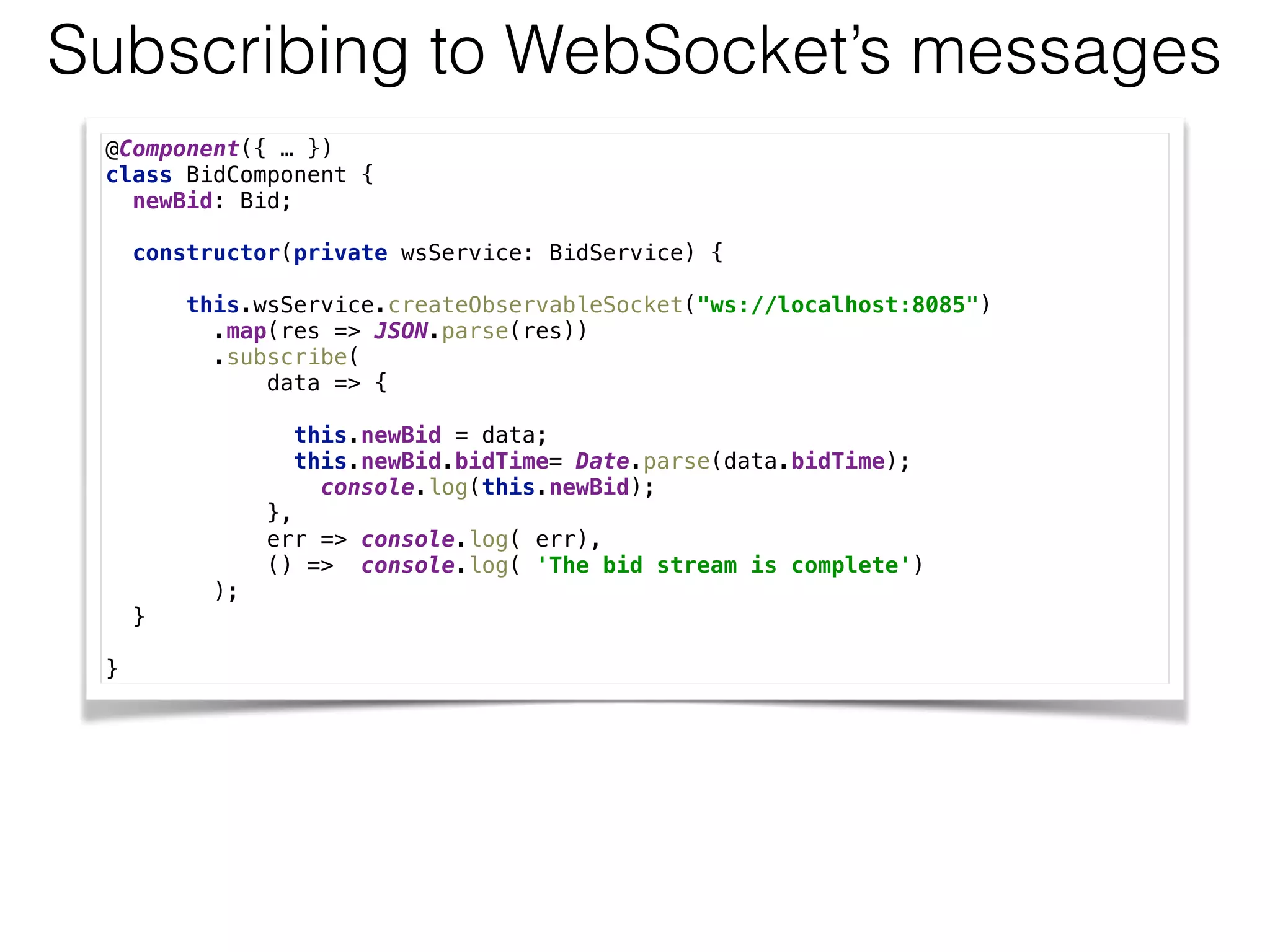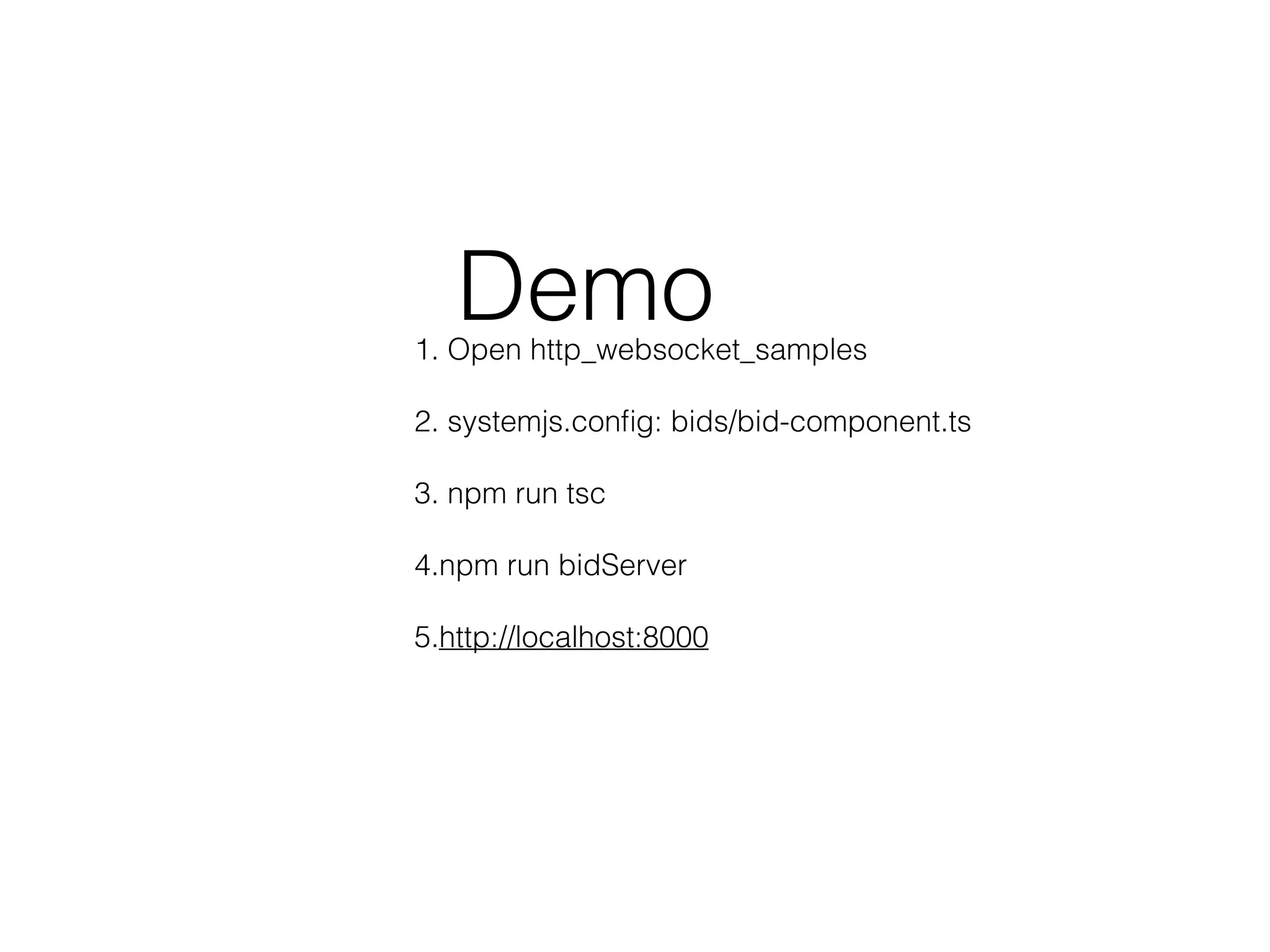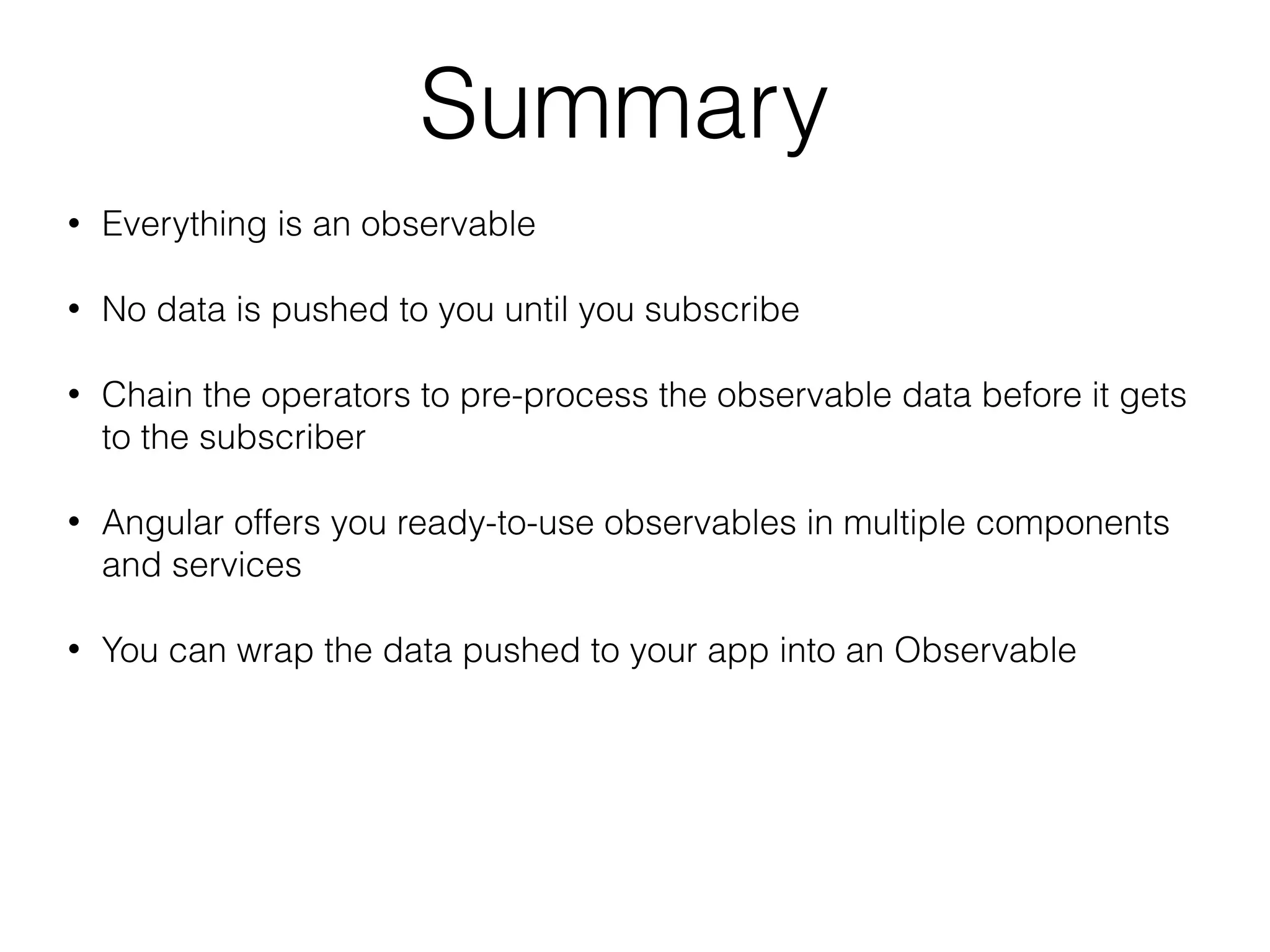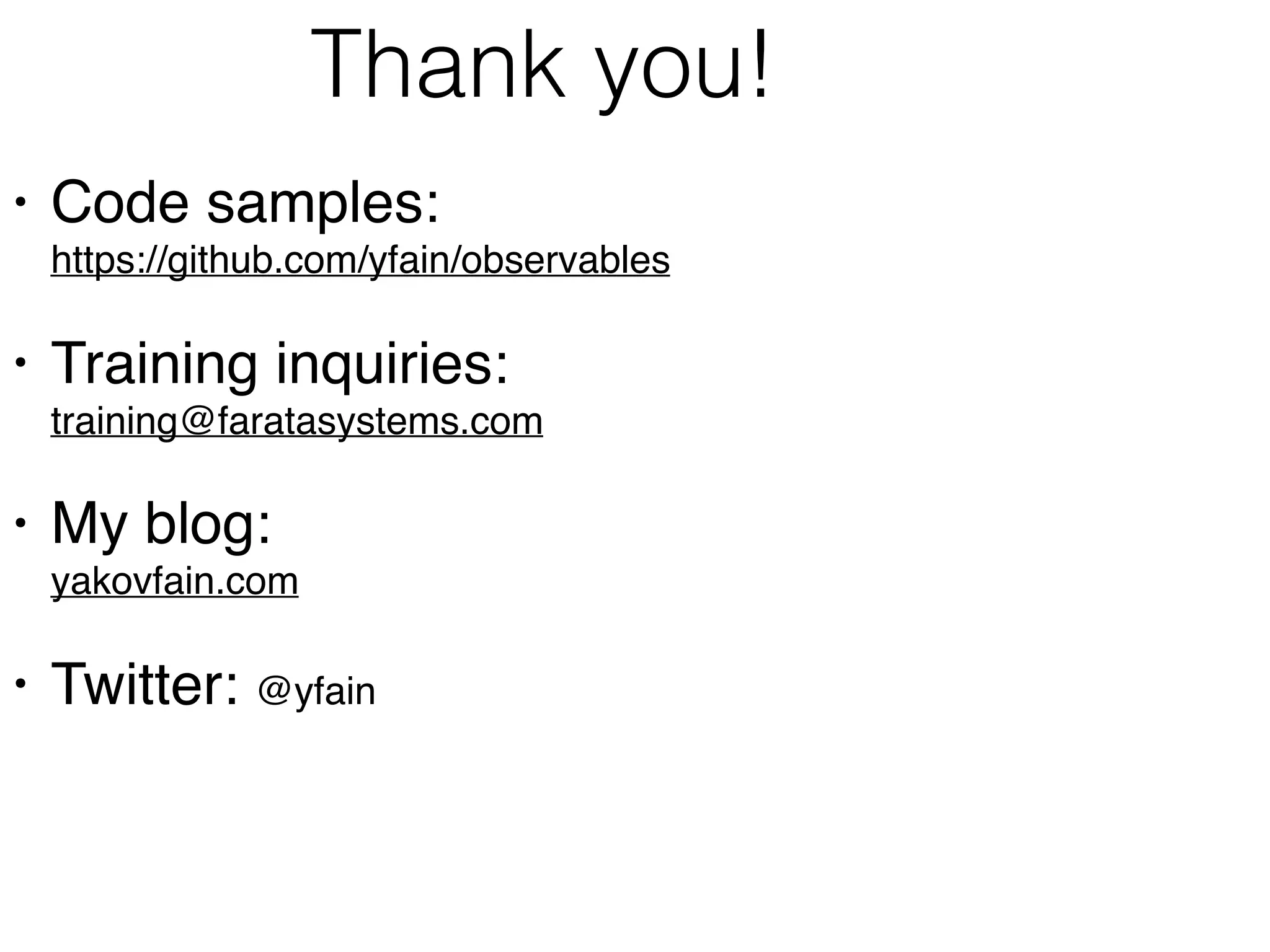This document discusses reactive programming in Angular 2 using RxJS. It introduces Observables and Observable operators like map, filter, and switchMap. It explains how to use Observables with HTTP requests, forms, and routing in Angular. Key concepts covered include creating Observables, subscribing to them, transforming streams with operators, and sharing Observables between subscribers.
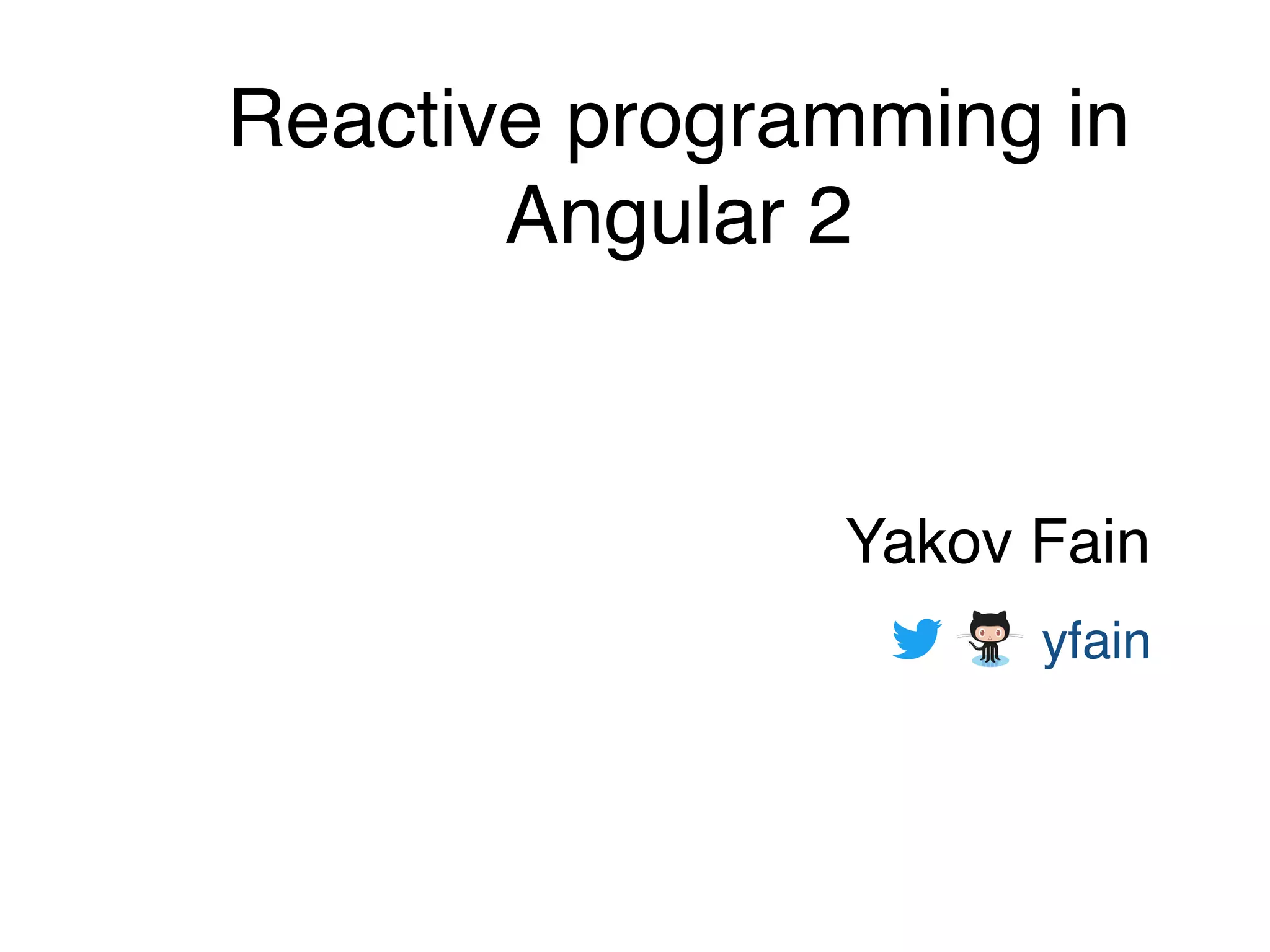
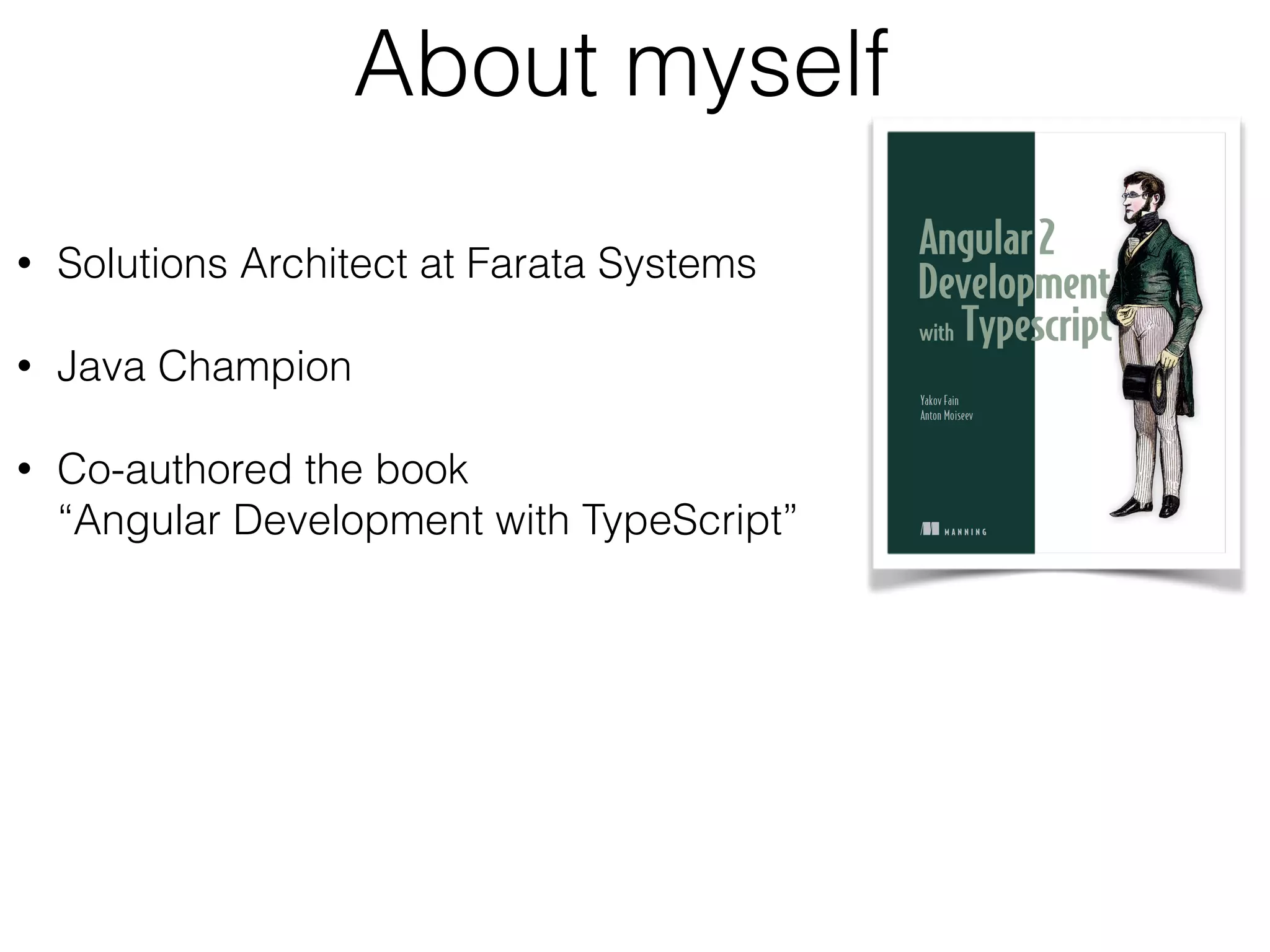
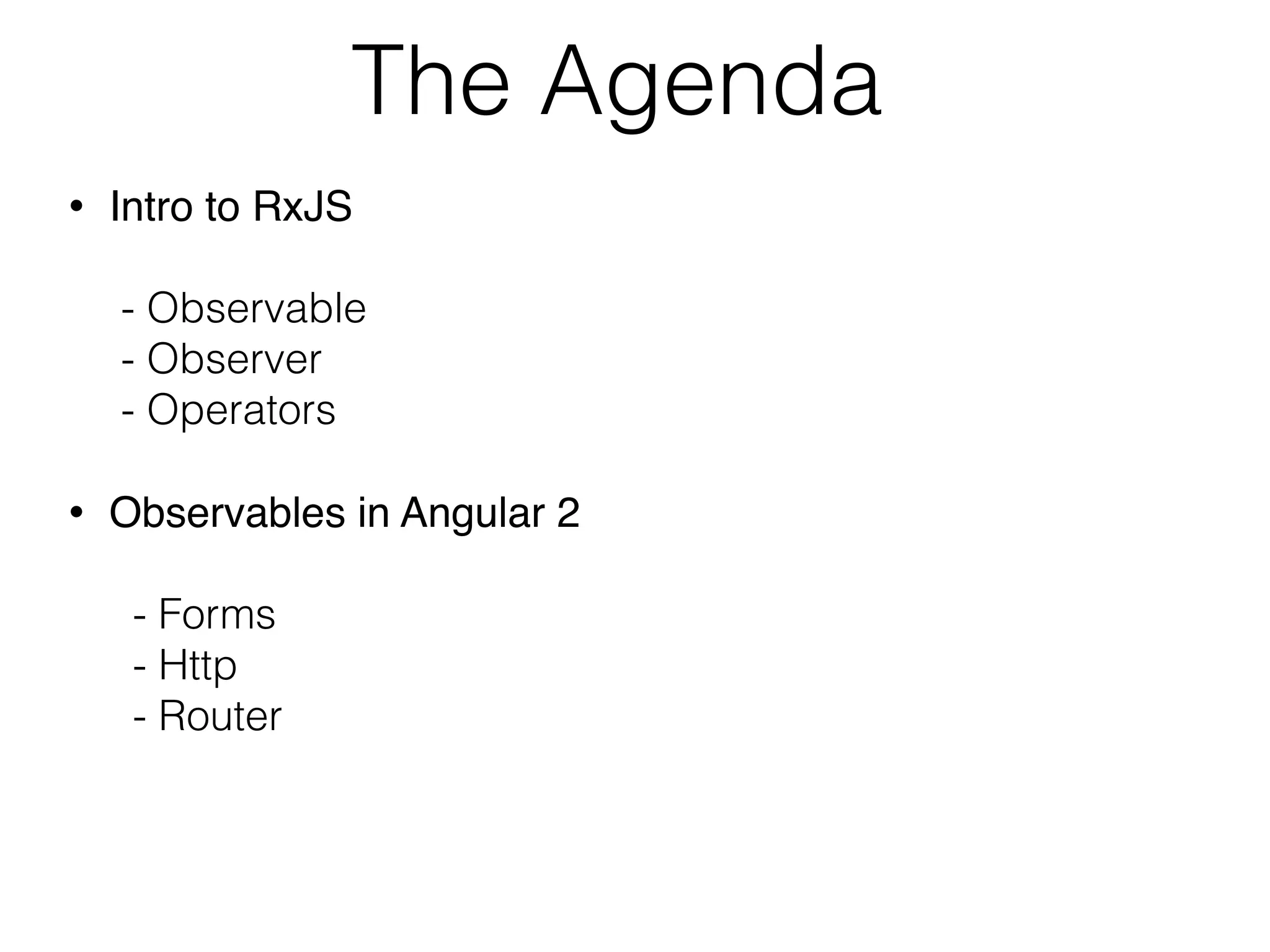
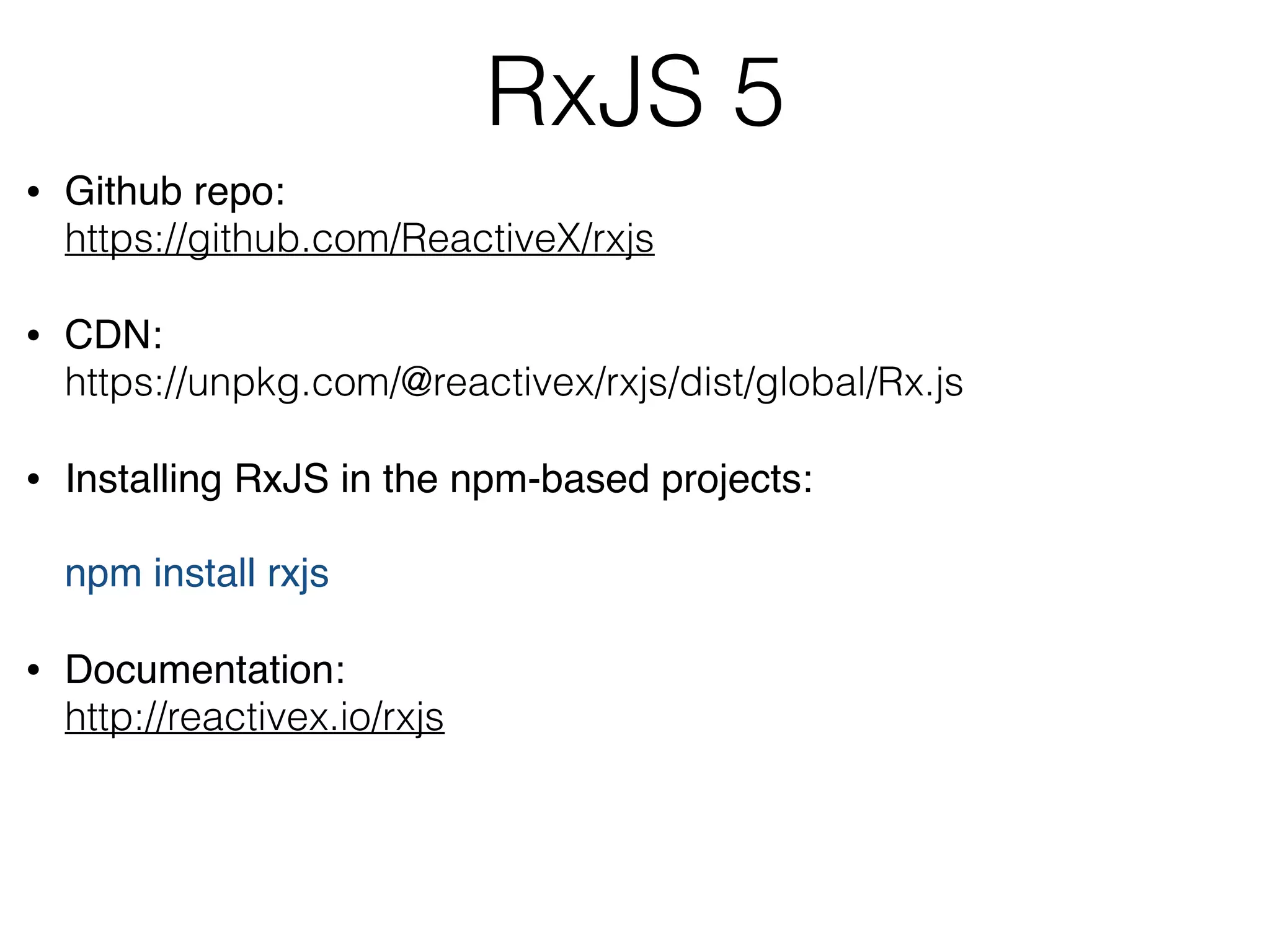
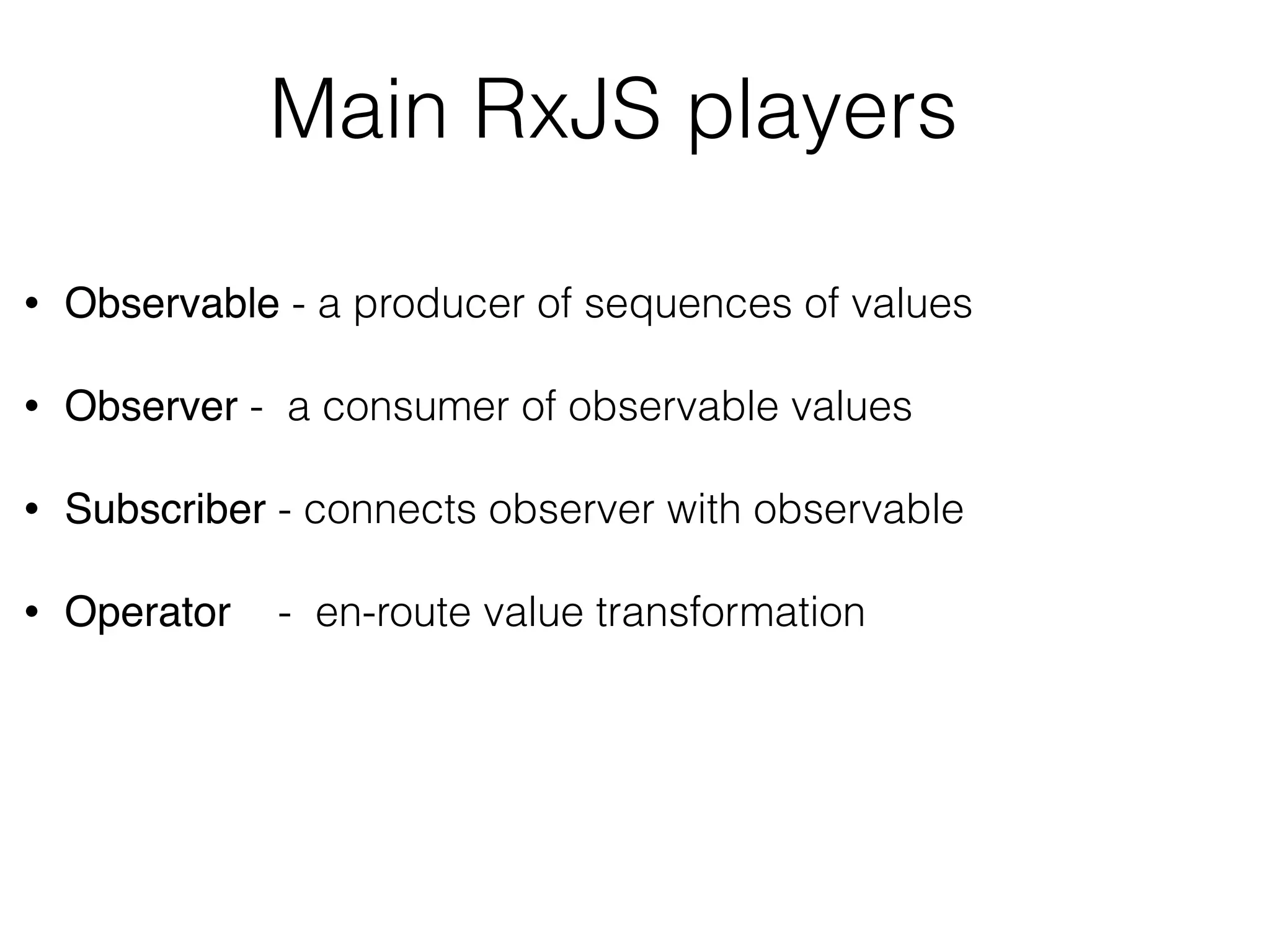
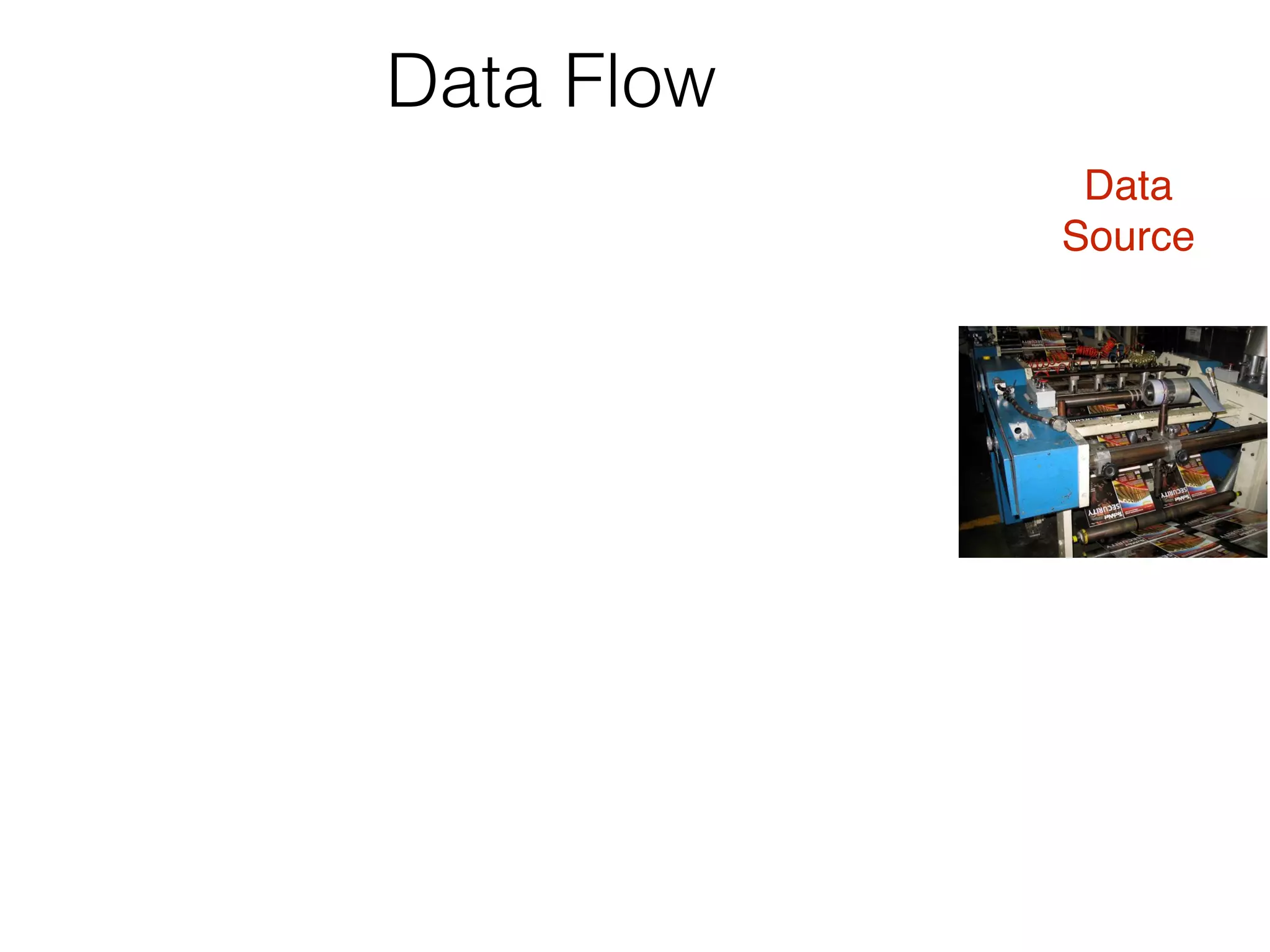
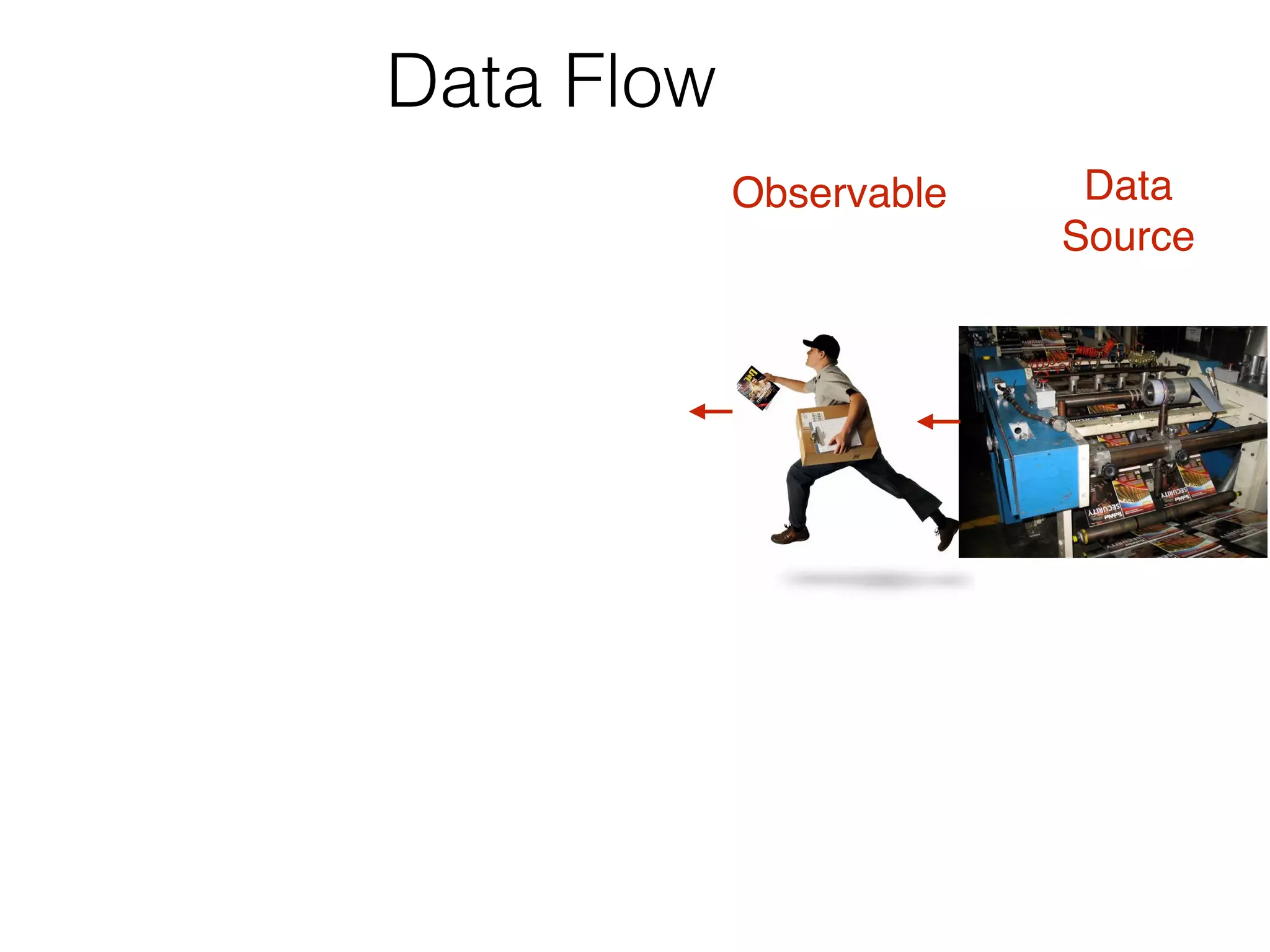
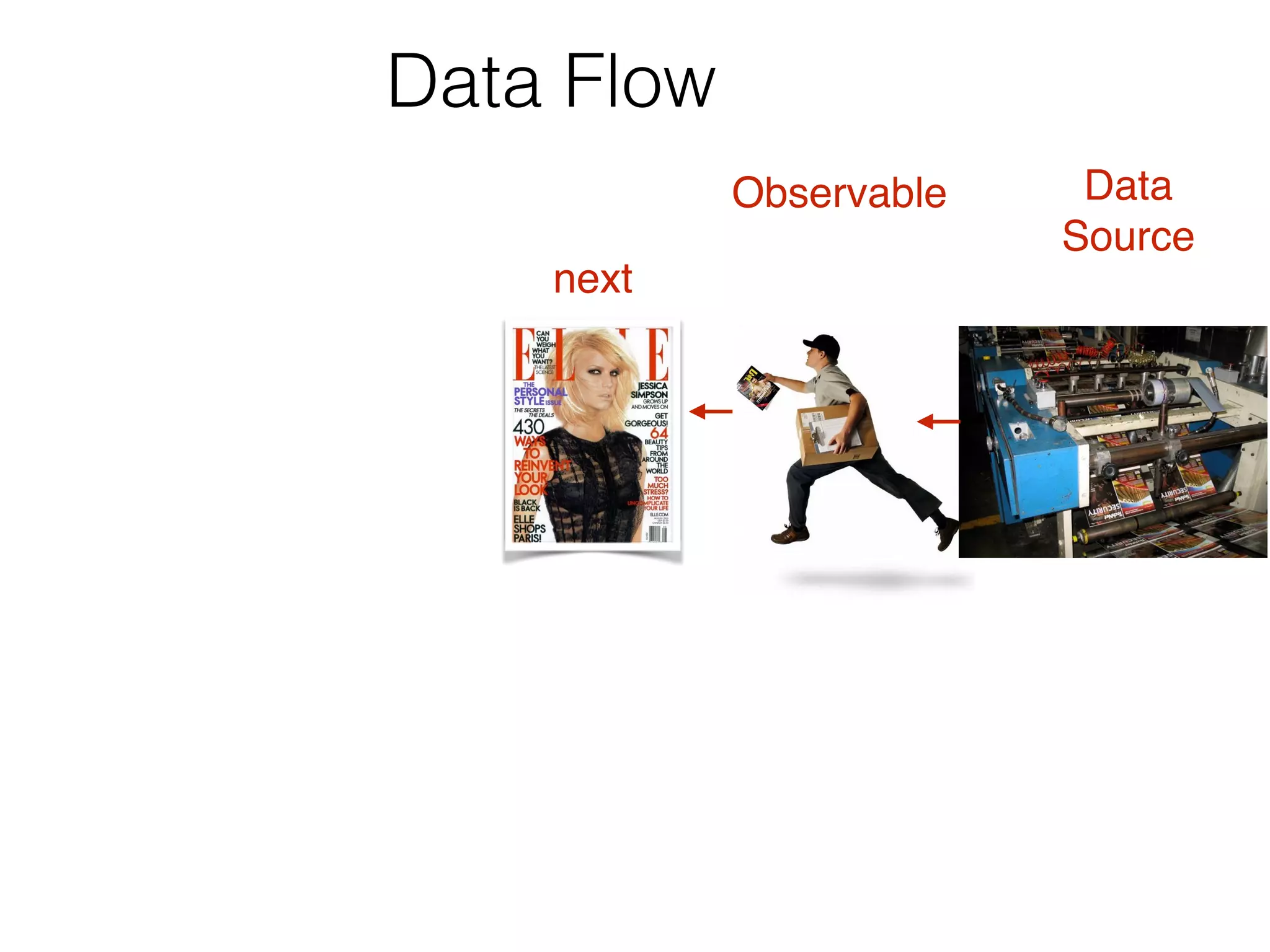
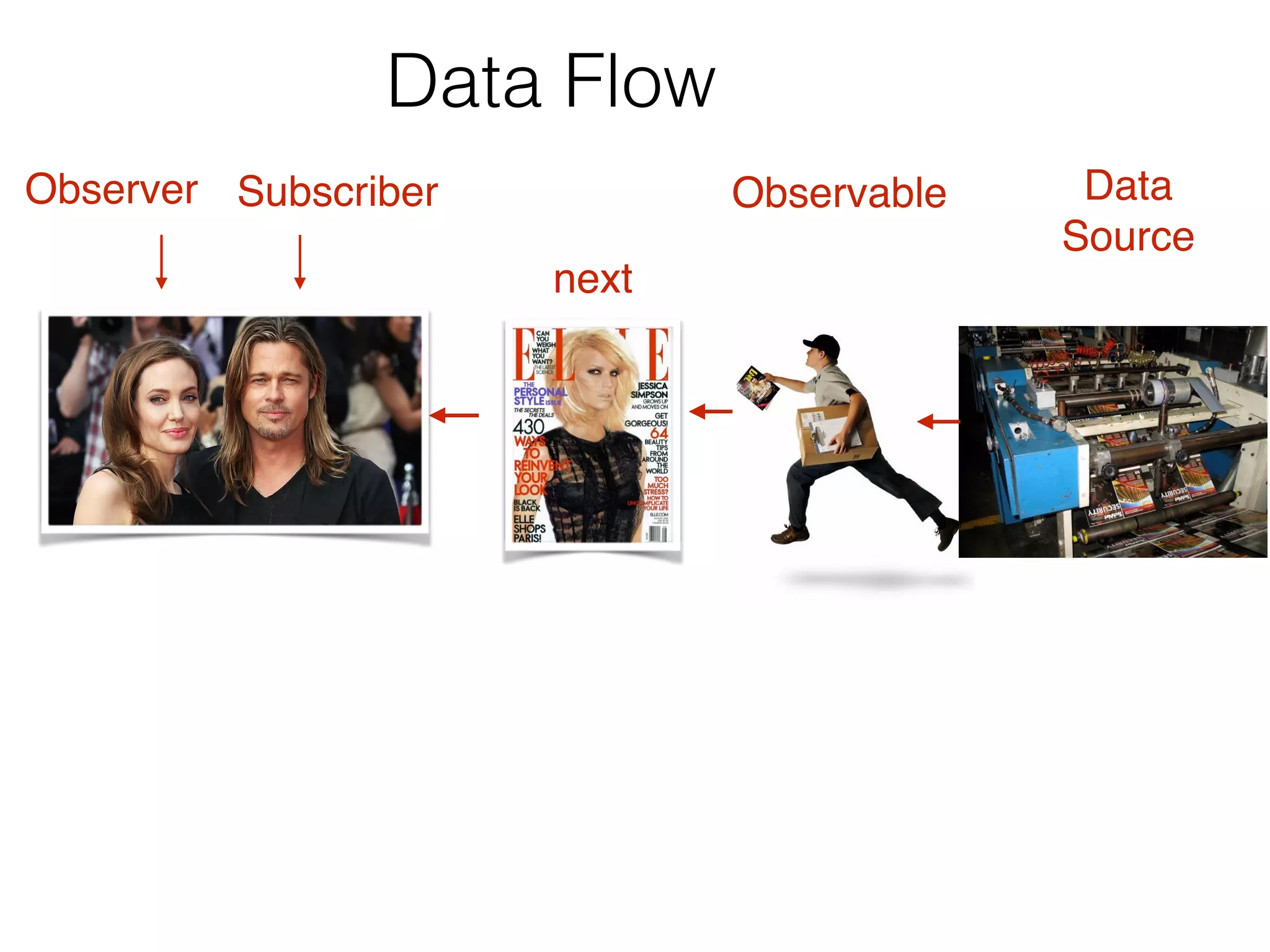
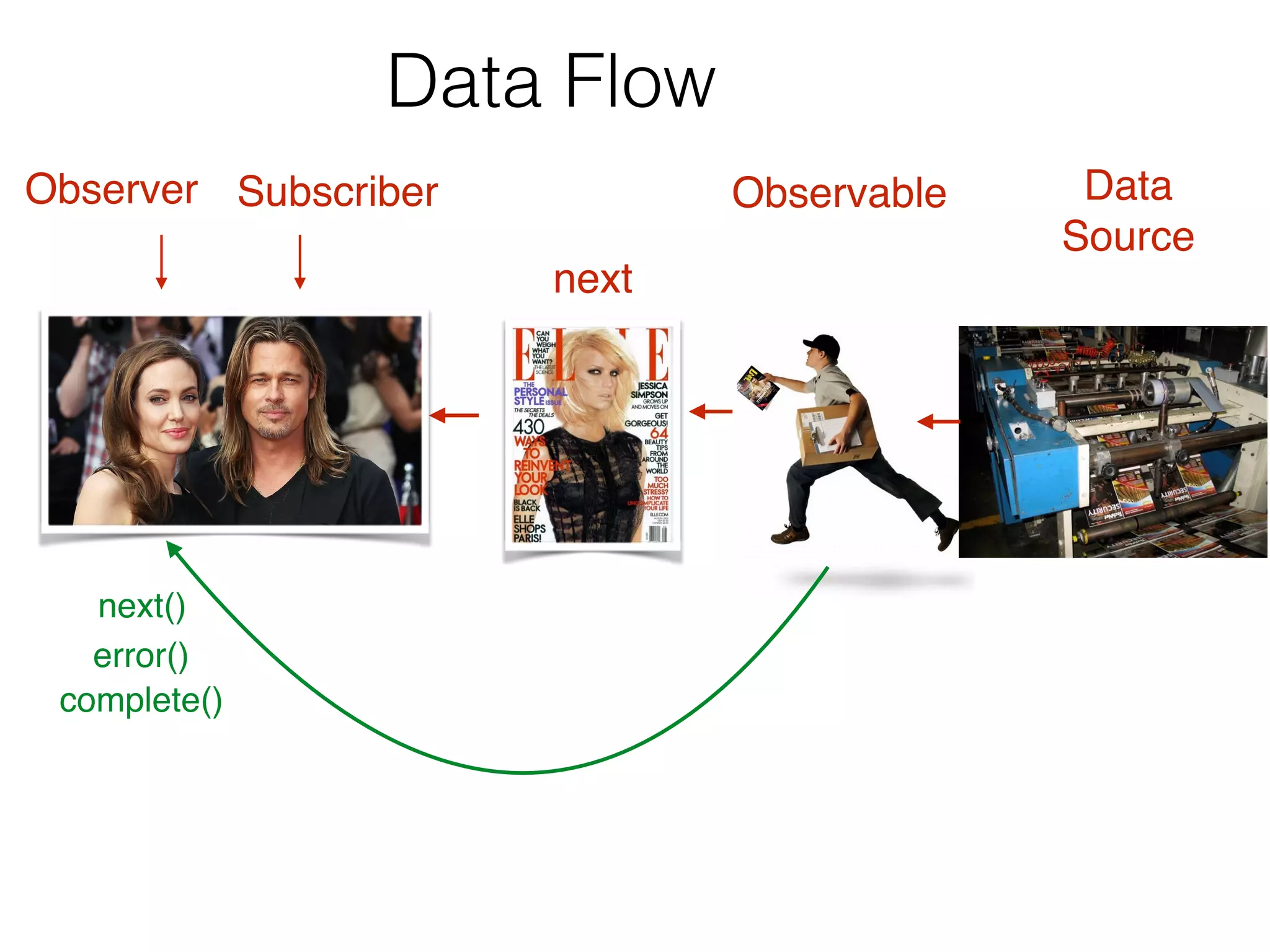
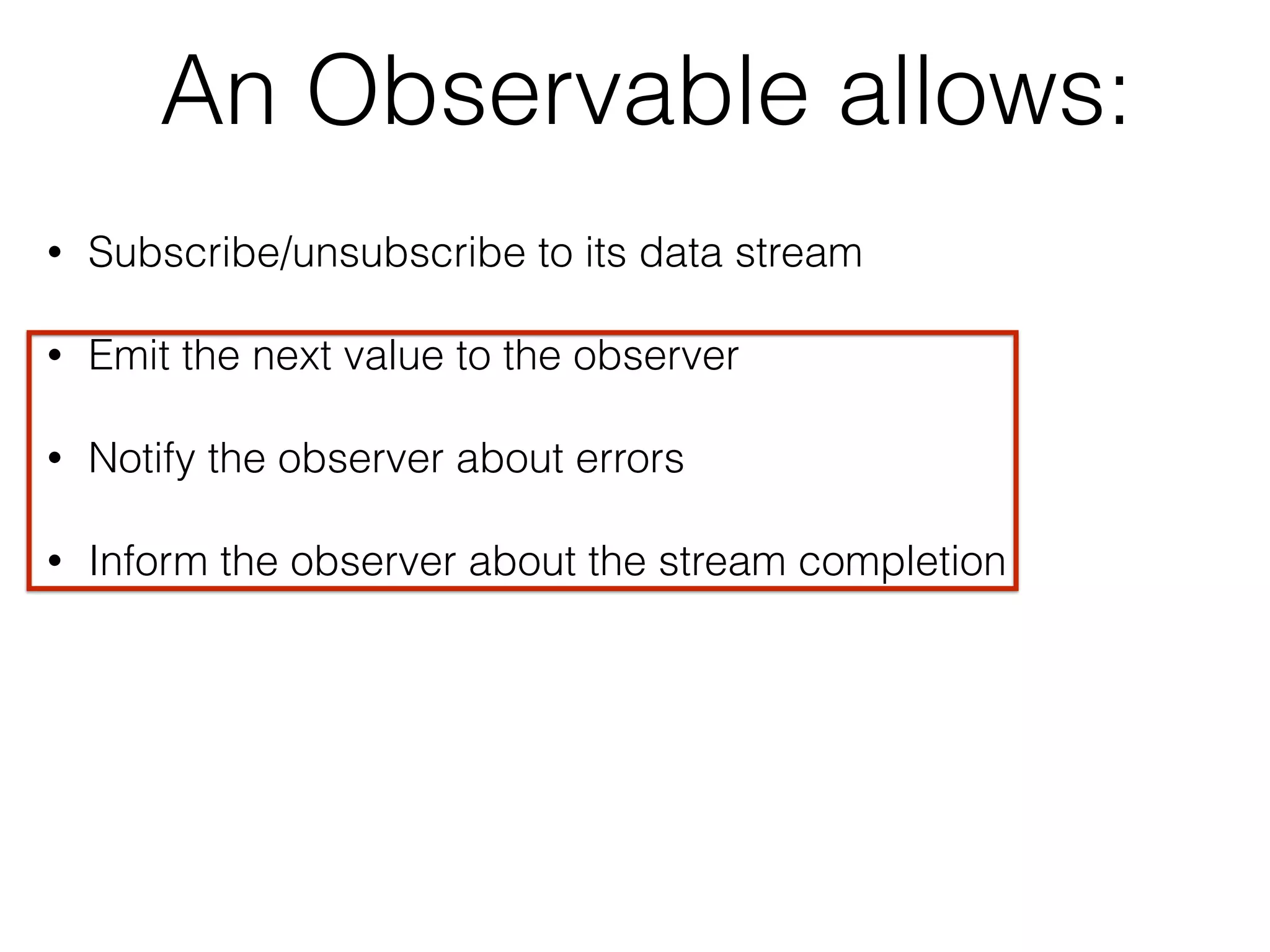
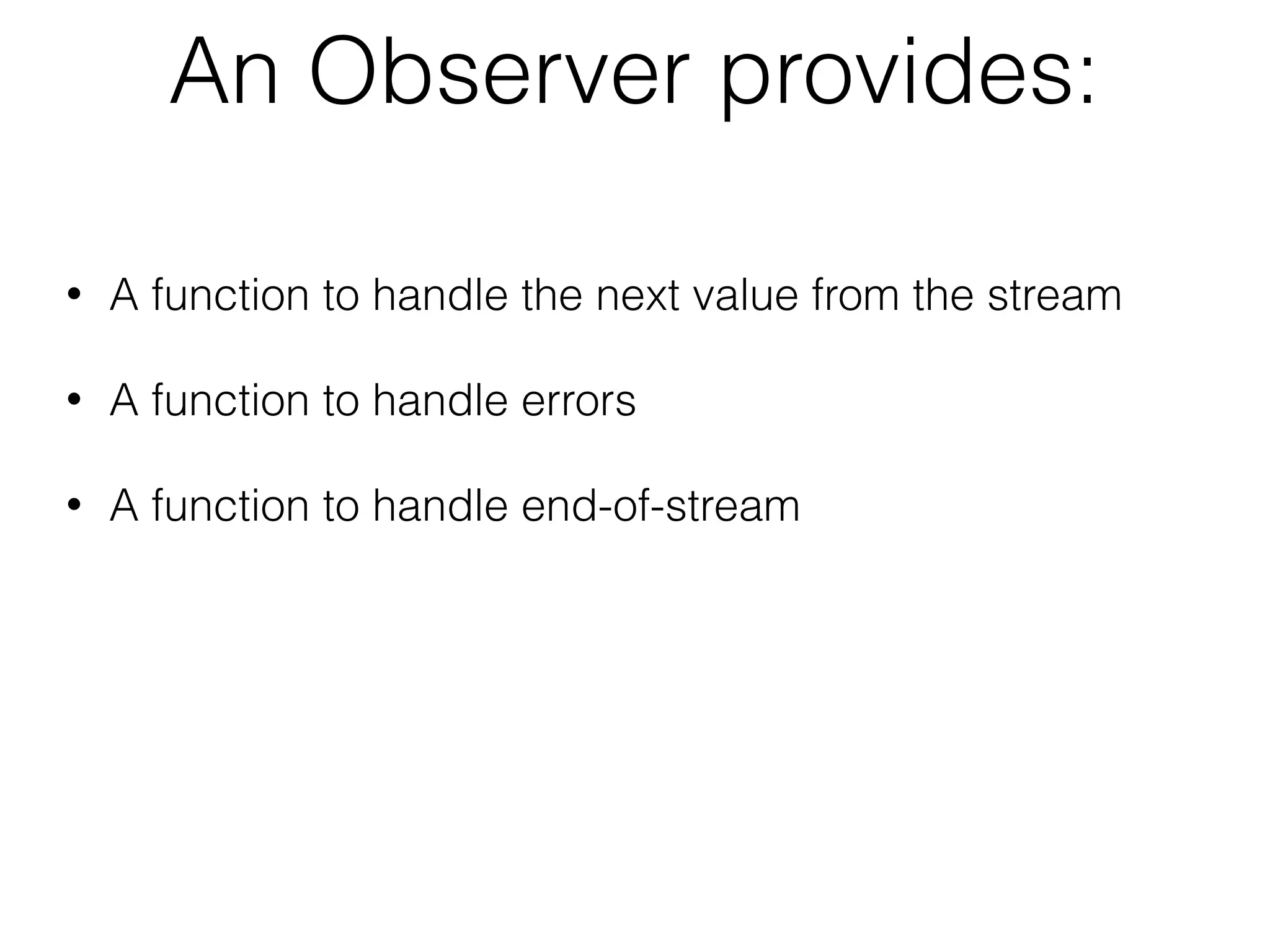
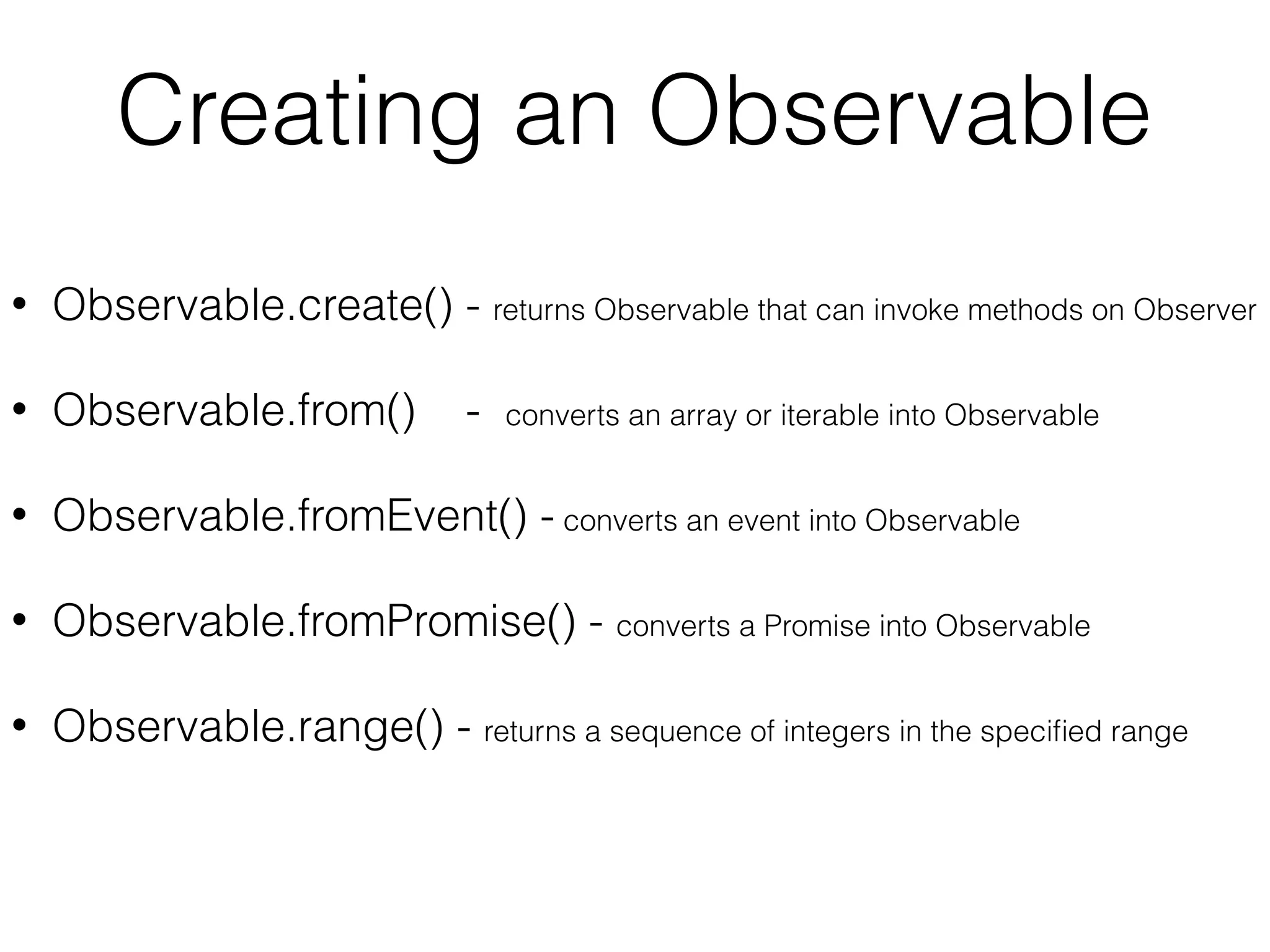
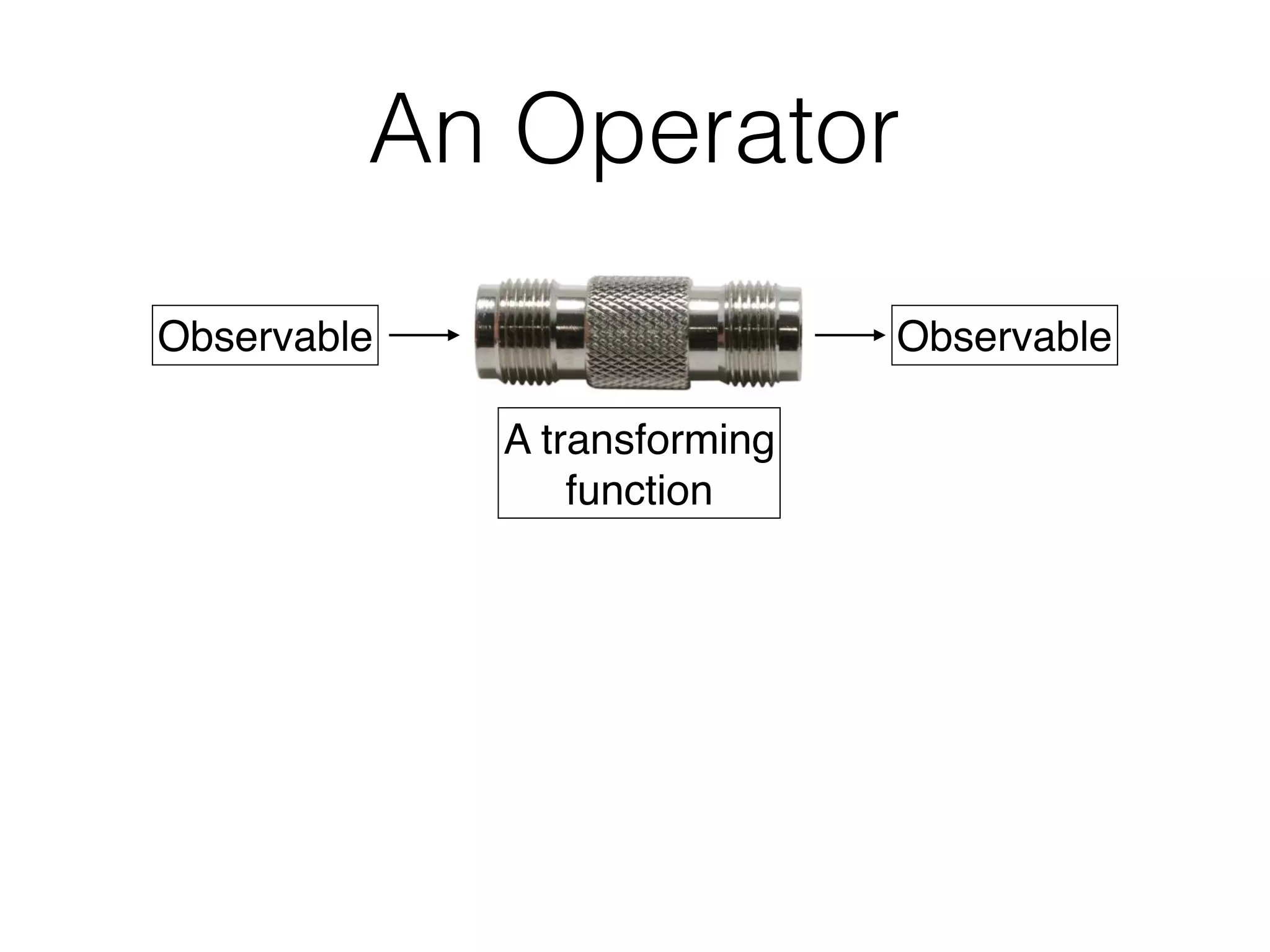
![Let’s have a beer let beers = [
{name: "Stella", country: "Belgium", price: 9.50},
{name: "Sam Adams", country: "USA", price: 8.50},
{name: "Bud Light", country: "USA", price: 6.50},
{name: "Brooklyn Lager", country: "USA", price: 8.00},
{name: "Sapporo", country: "Japan", price: 7.50}
];](https://image.slidesharecdn.com/observablesdevnexus-170307050850/75/Reactive-programming-in-Angular-2-15-2048.jpg)
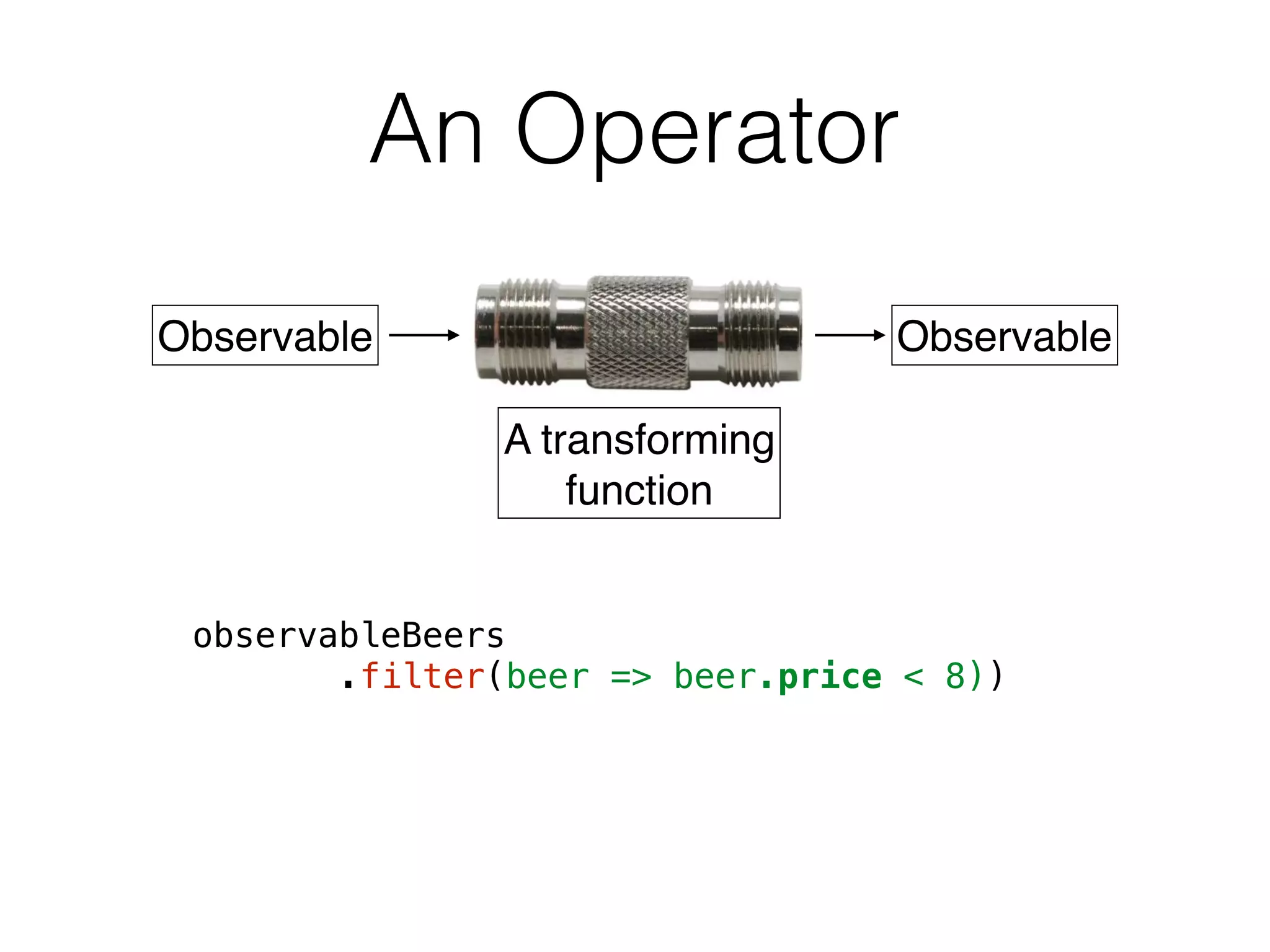
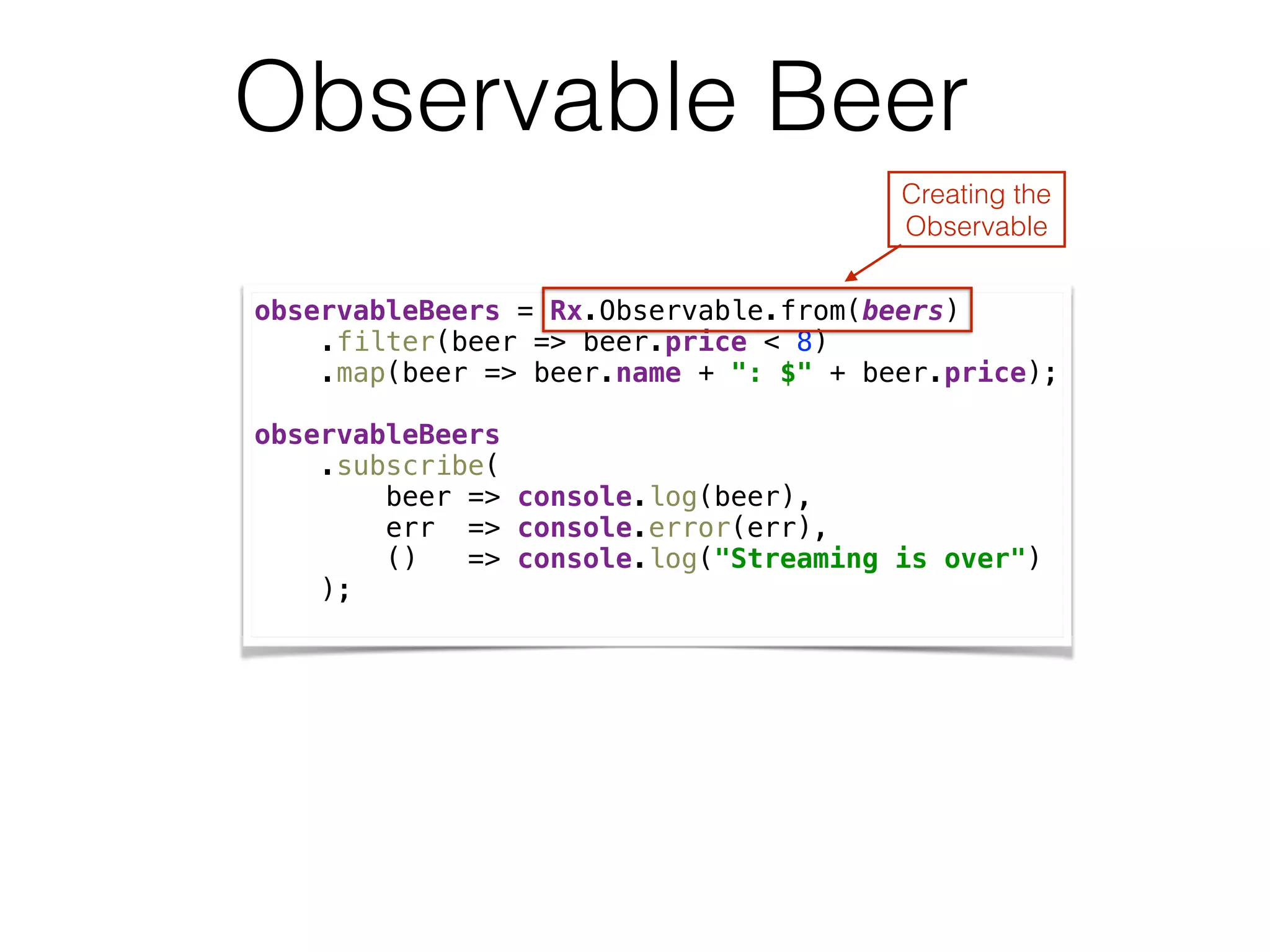
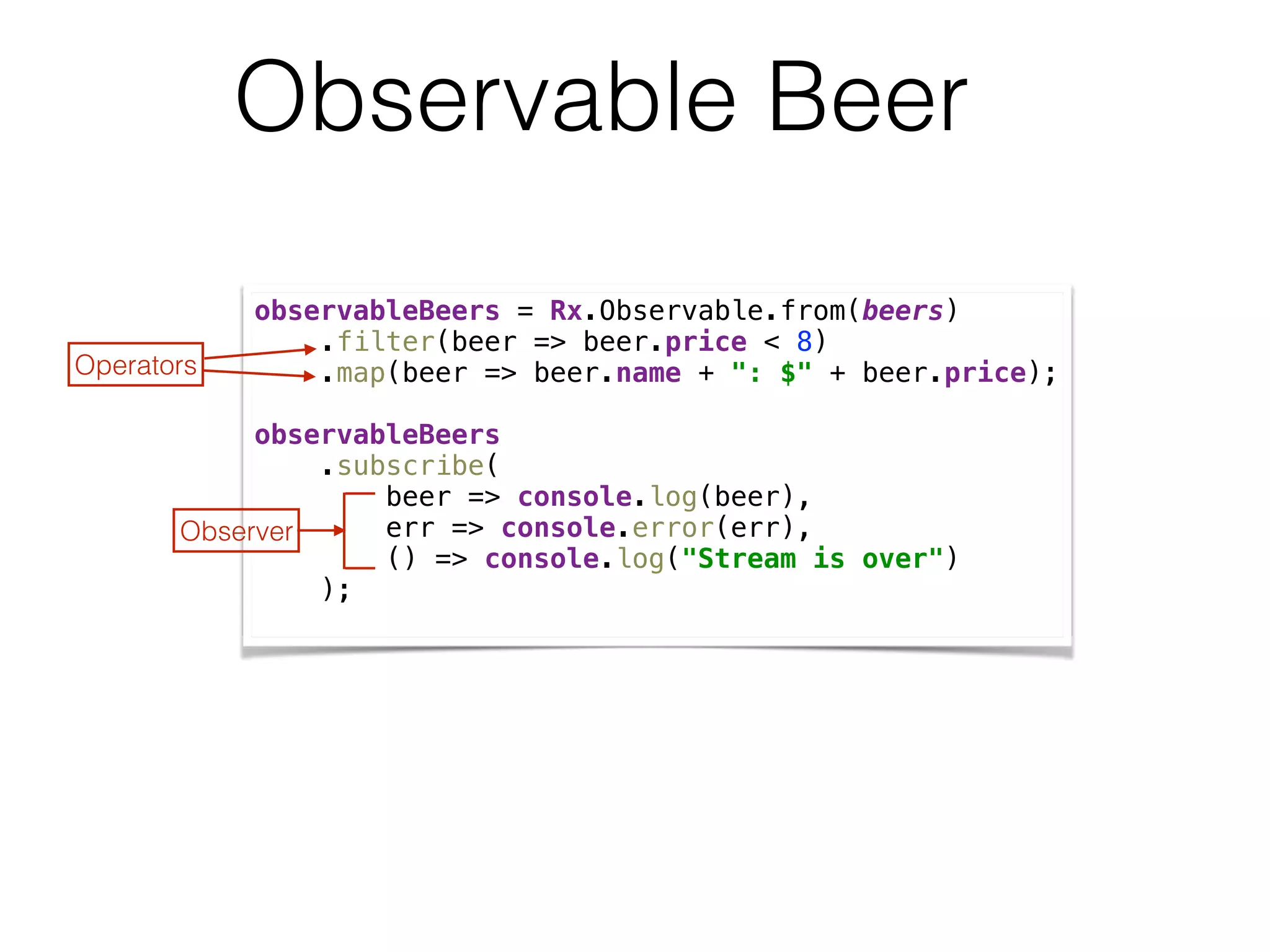
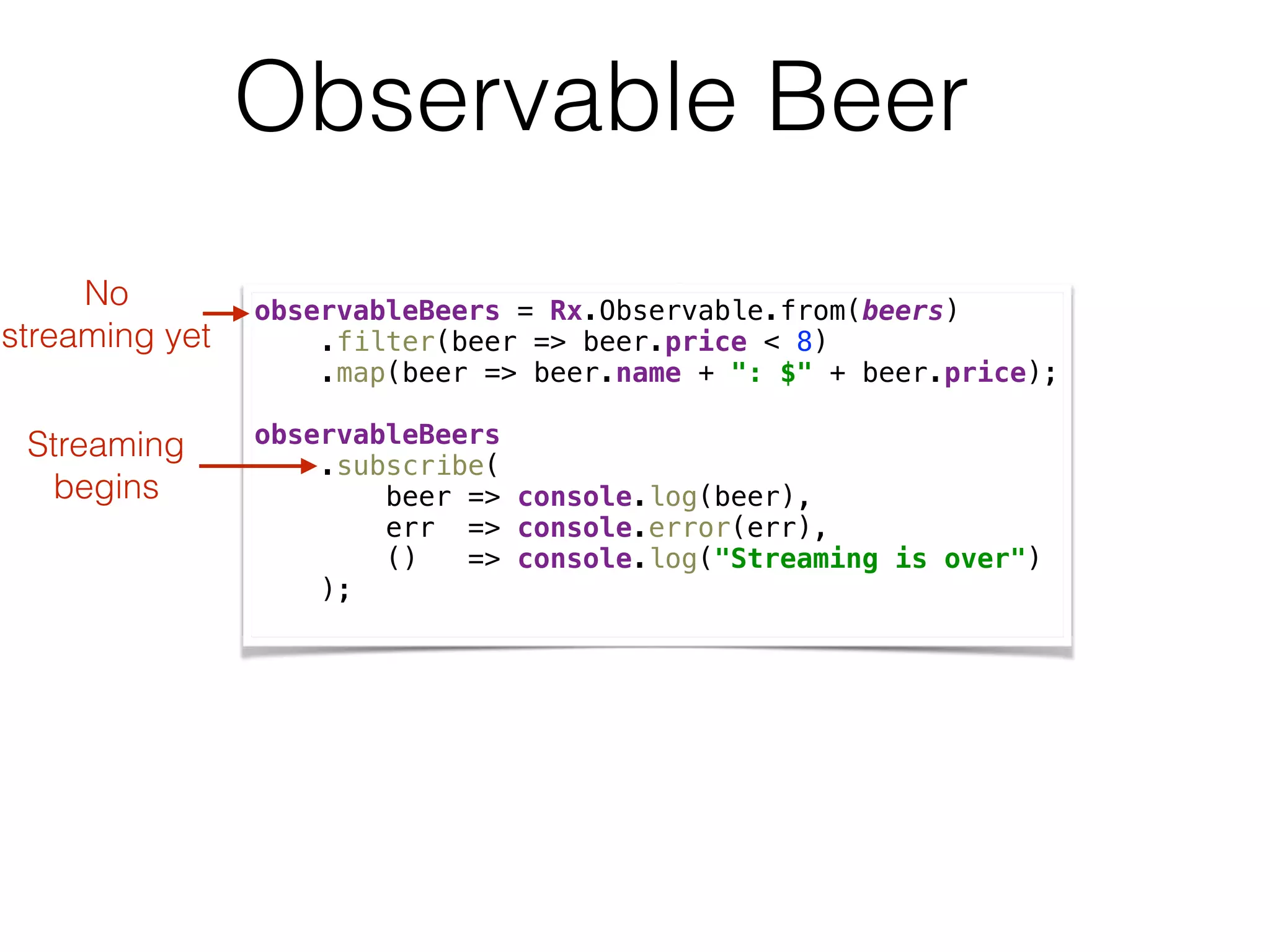
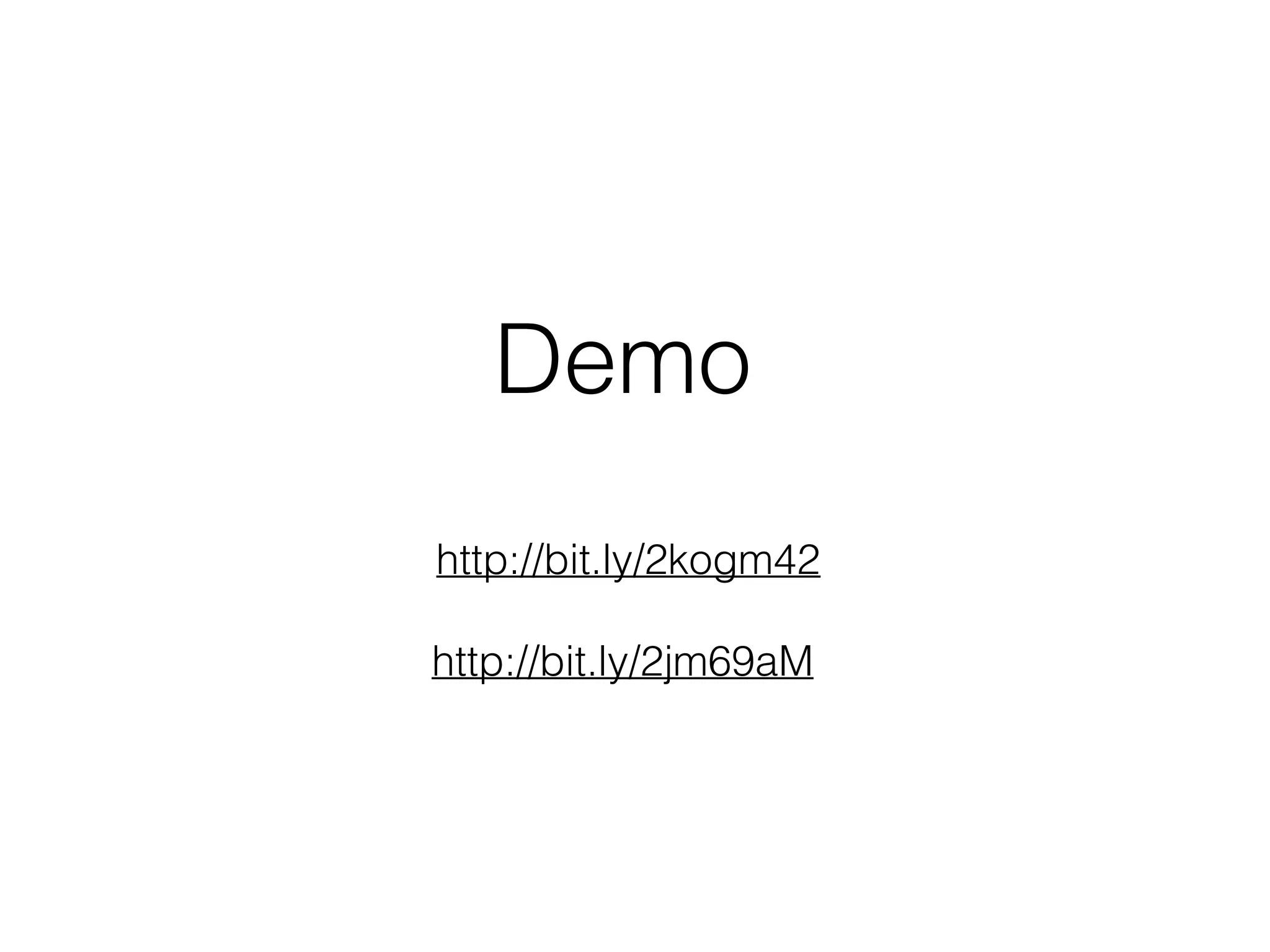

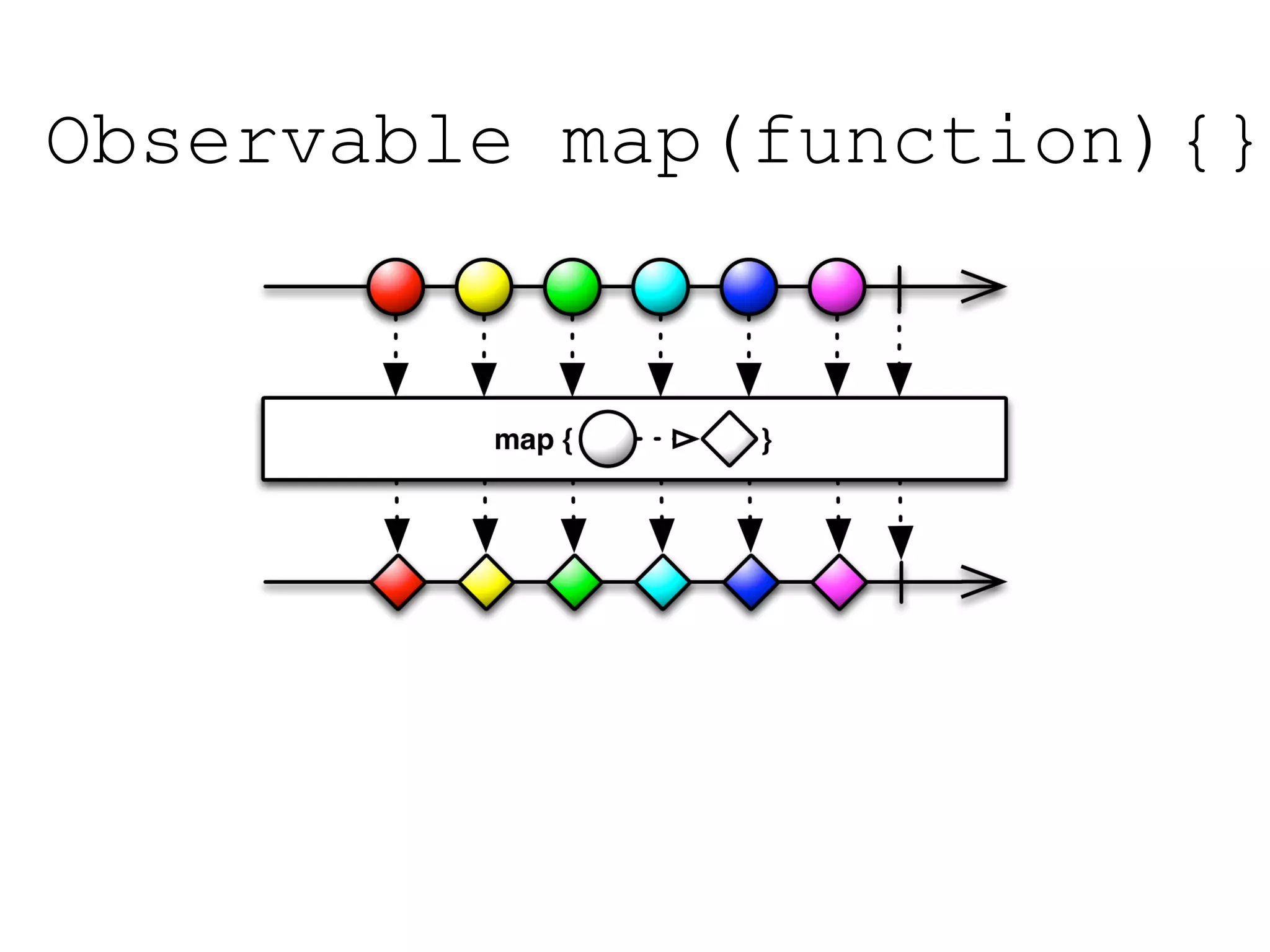
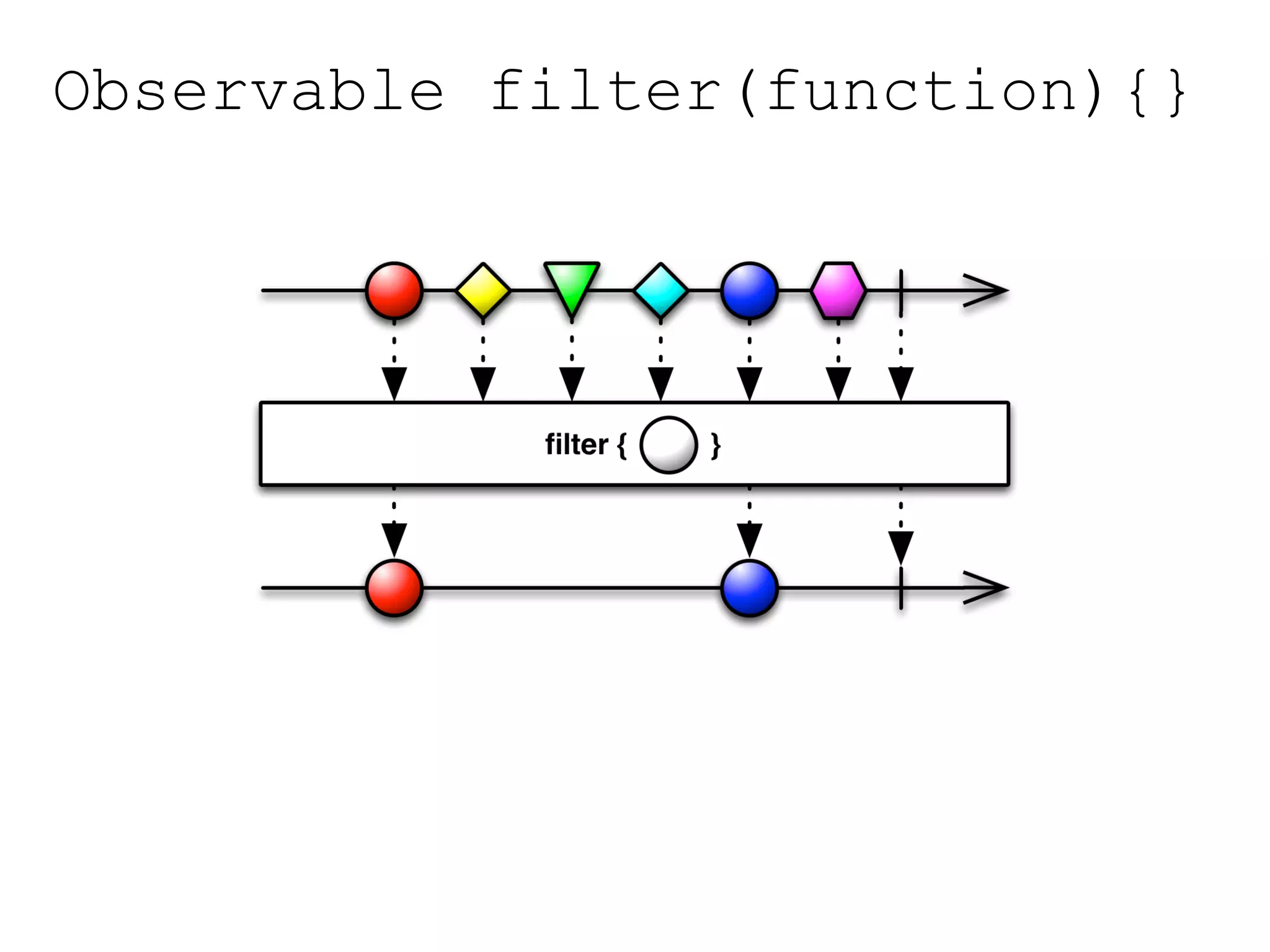
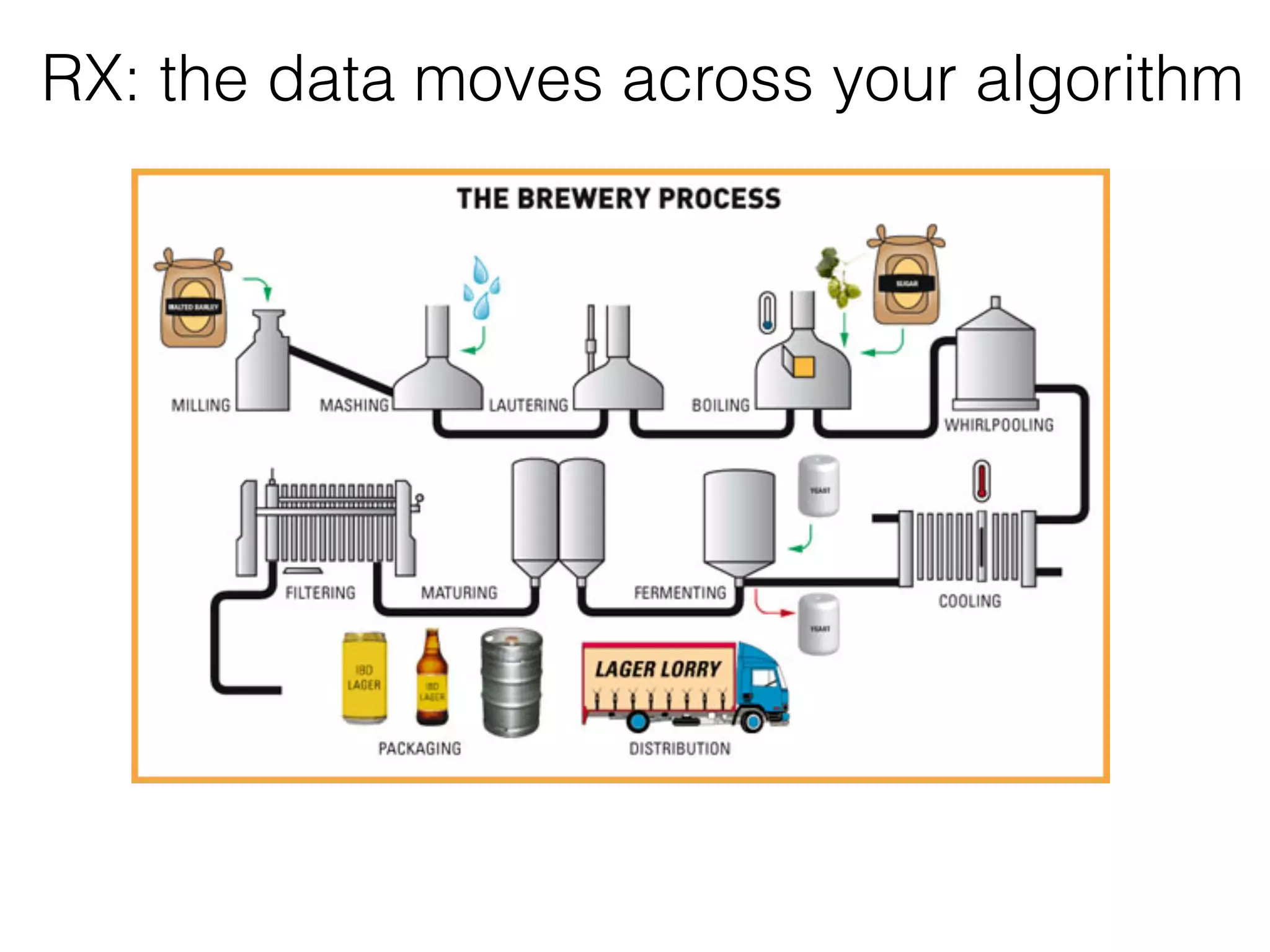
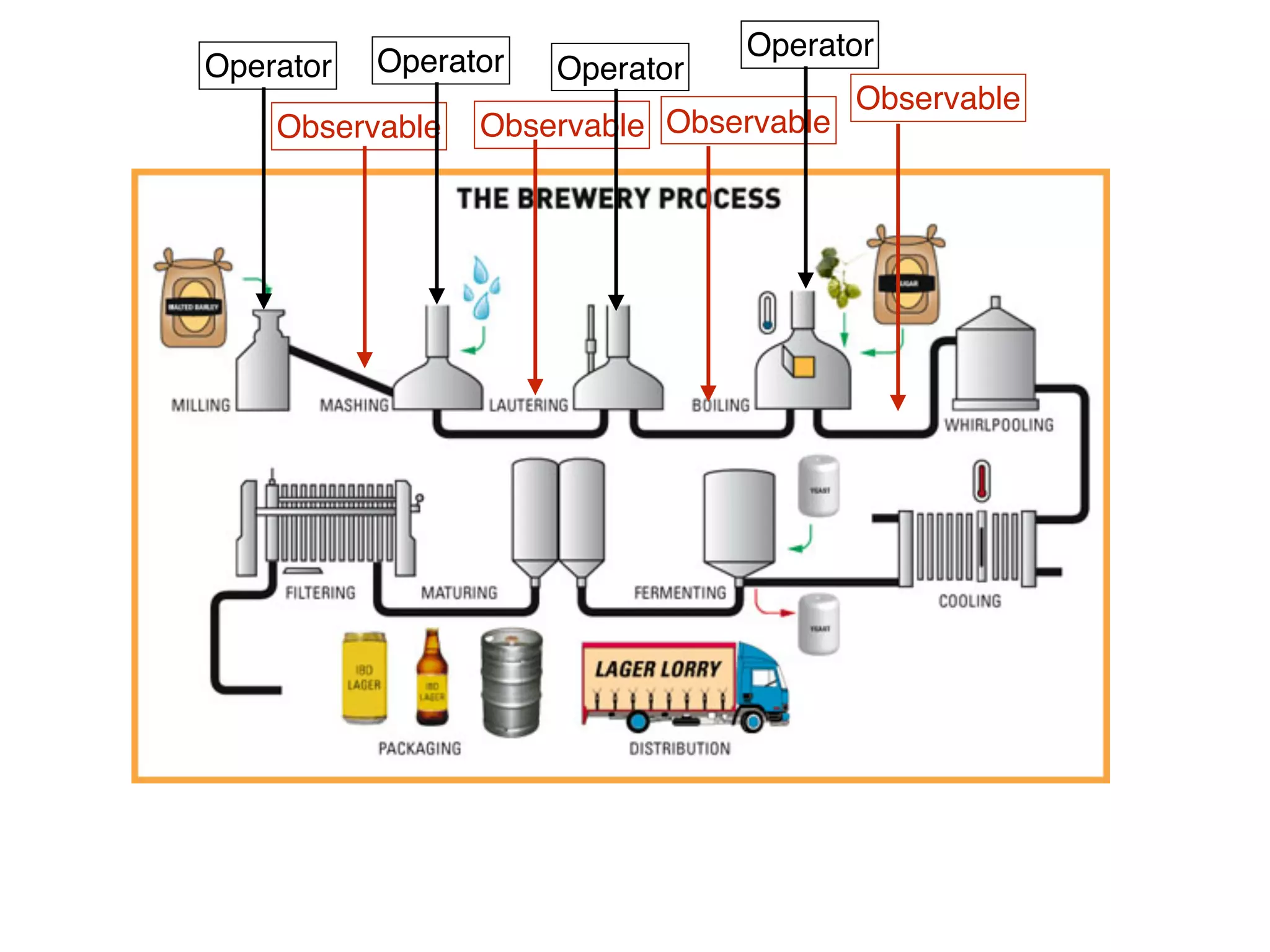
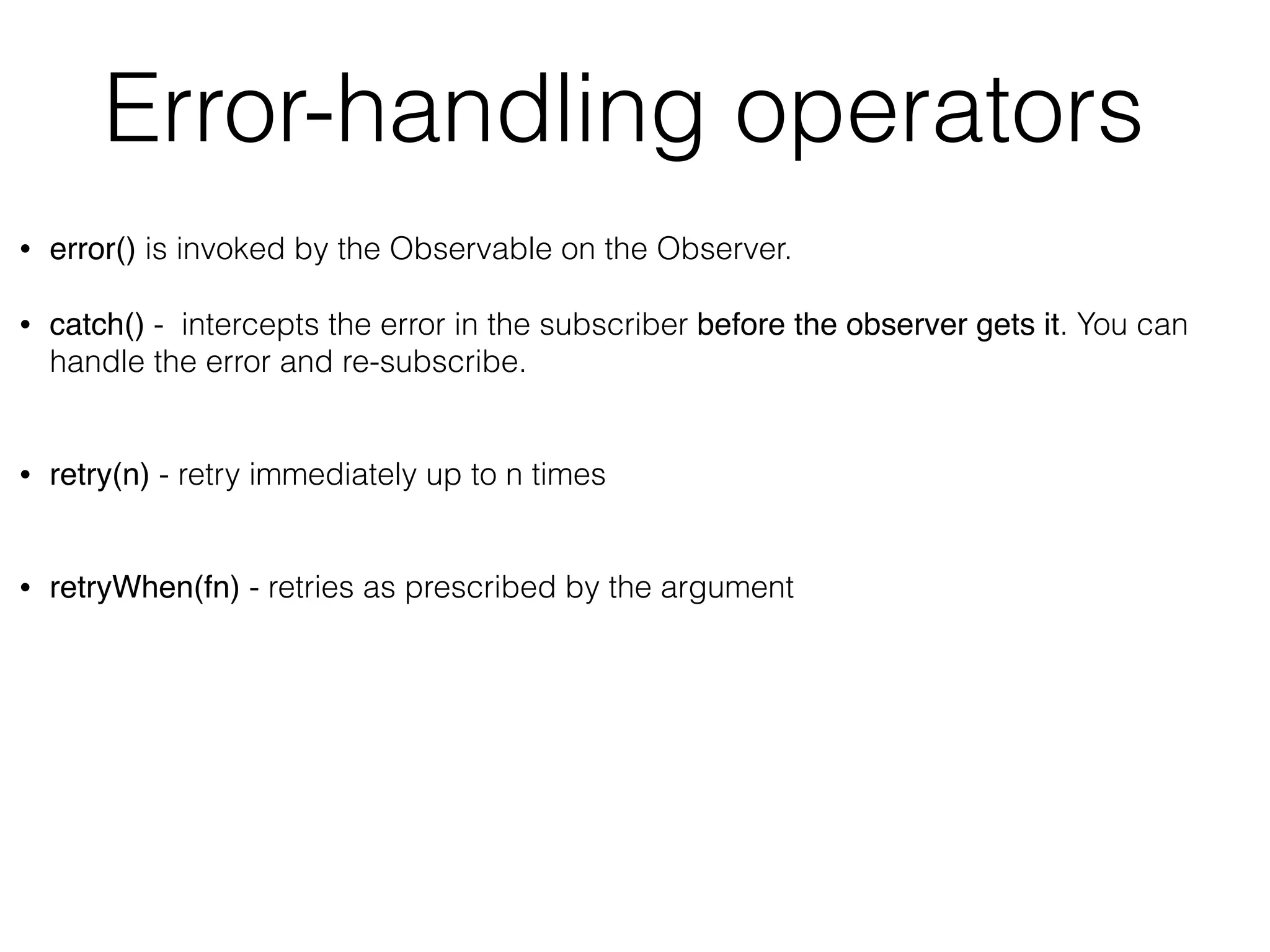
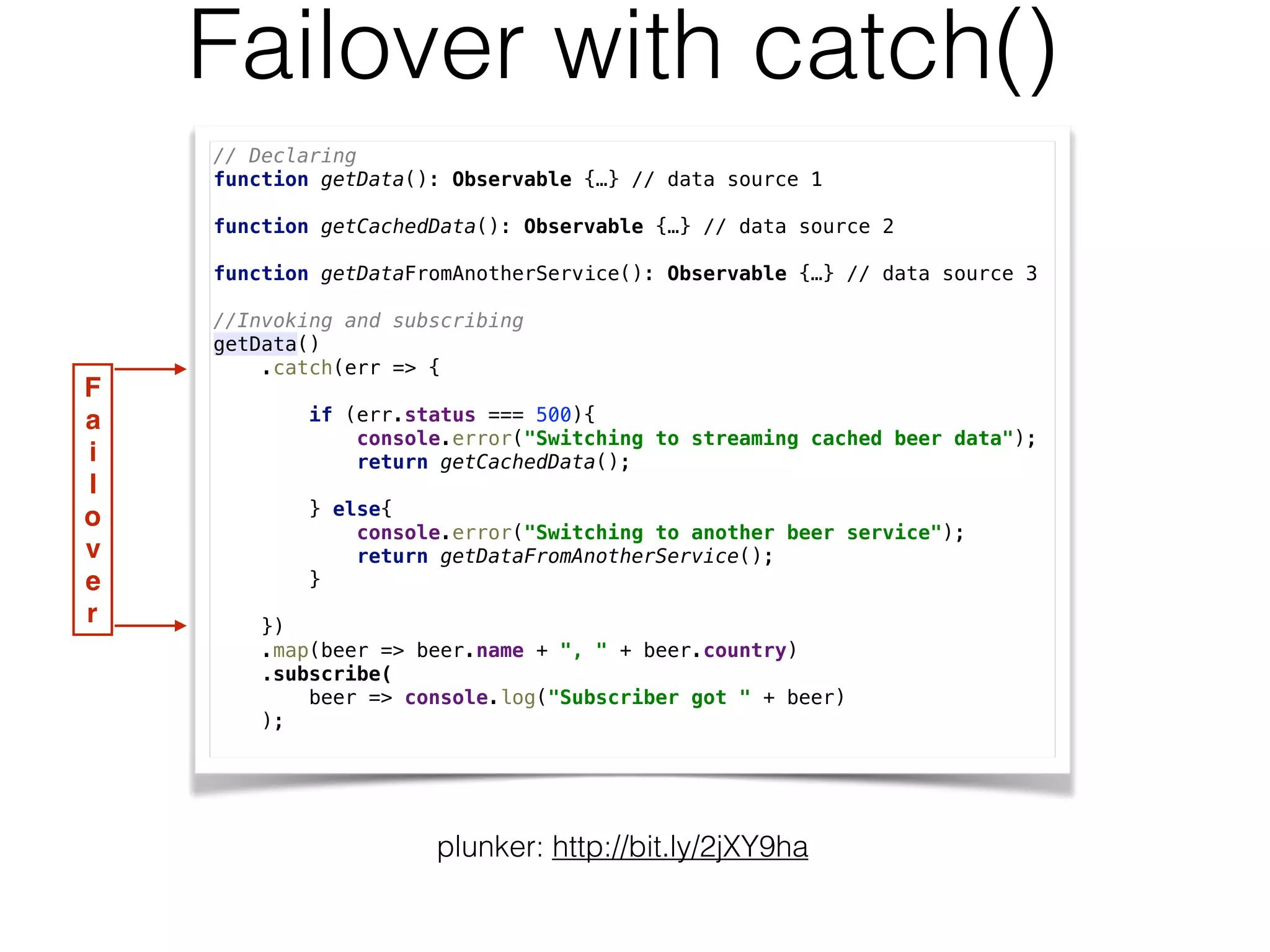
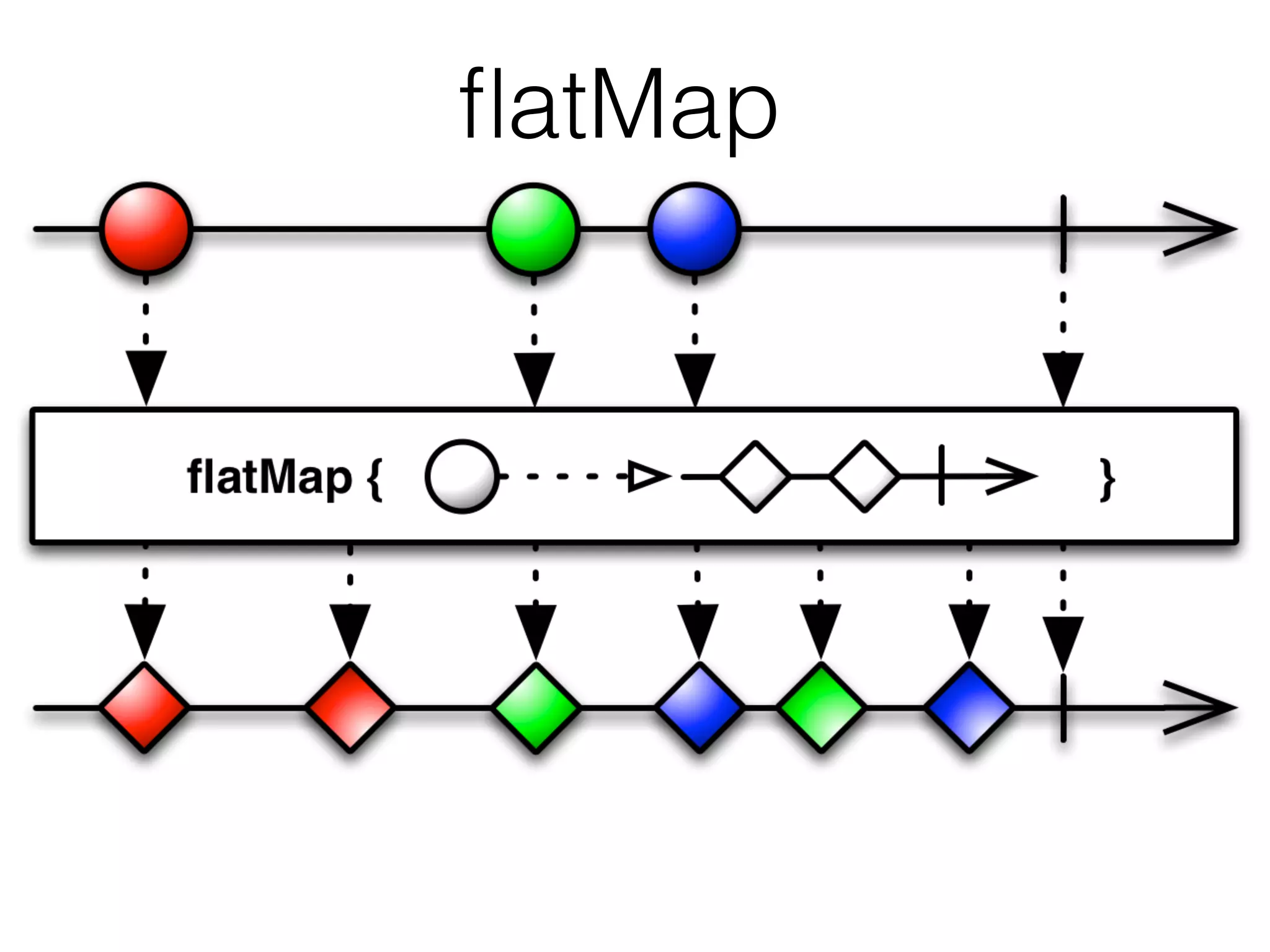
![function getDrinks() {
let beers = Rx.Observable.from([
{name: "Stella", country: "Belgium", price: 9.50},
{name: "Sam Adams", country: "USA", price: 8.50},
{name: "Bud Light", country: "USA", price: 6.50}
]);
let softDrinks = Rx.Observable.from([
{name: "Coca Cola", country: "USA", price: 1.50},
{name: "Fanta", country: "USA", price: 1.50},
{name: "Lemonade", country: "France", price: 2.50}
]);
return Rx.Observable.create( observer => {
observer.next(beers); // pushing the beer pallet (observable)
observer.next(softDrinks); // pushing the soft drinks pallet (observable)
}
);
}
getDrinks()
.flatMap(drinks => drinks) // unloading drinks from pallets
.subscribe(
drink => console.log("Subscriber got " + drink.name + ": " + drink.price ) ); plunker http://bit.ly/2jZgc6T Operator flatMap• Handles every value emitted by an observable as another observable • Auto-subscribes to the internal observable and unwraps it](https://image.slidesharecdn.com/observablesdevnexus-170307050850/75/Reactive-programming-in-Angular-2-29-2048.jpg)
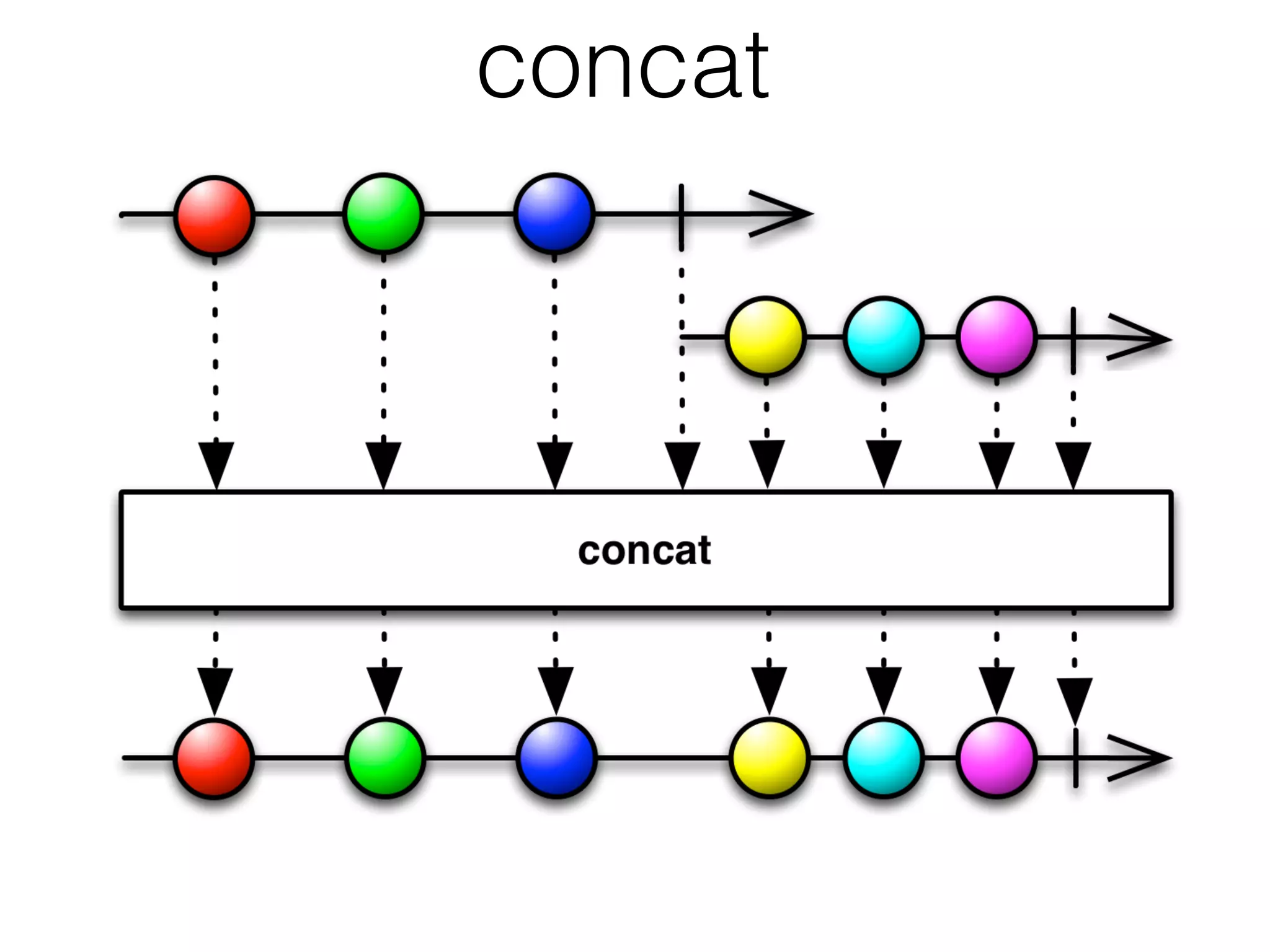
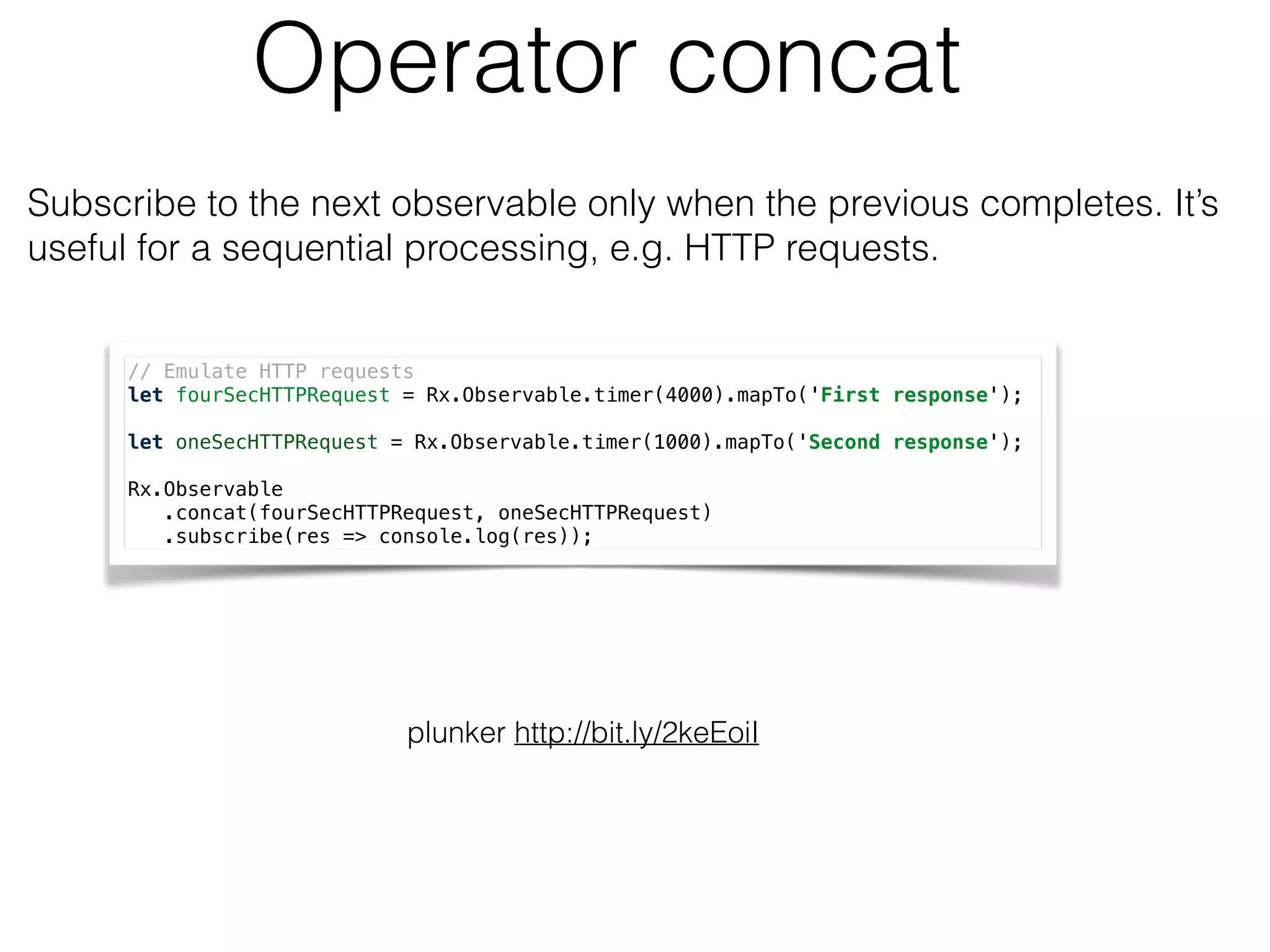
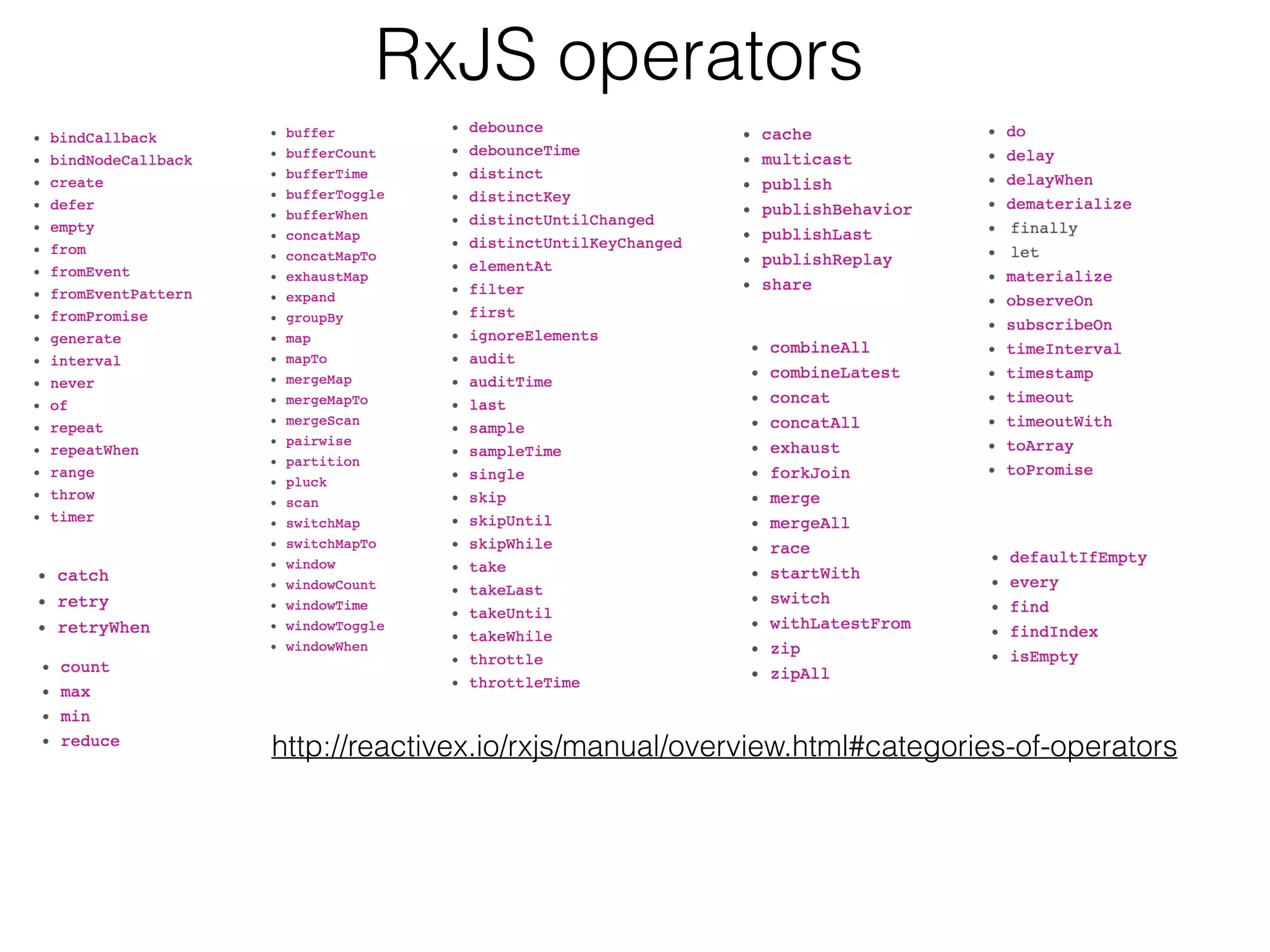
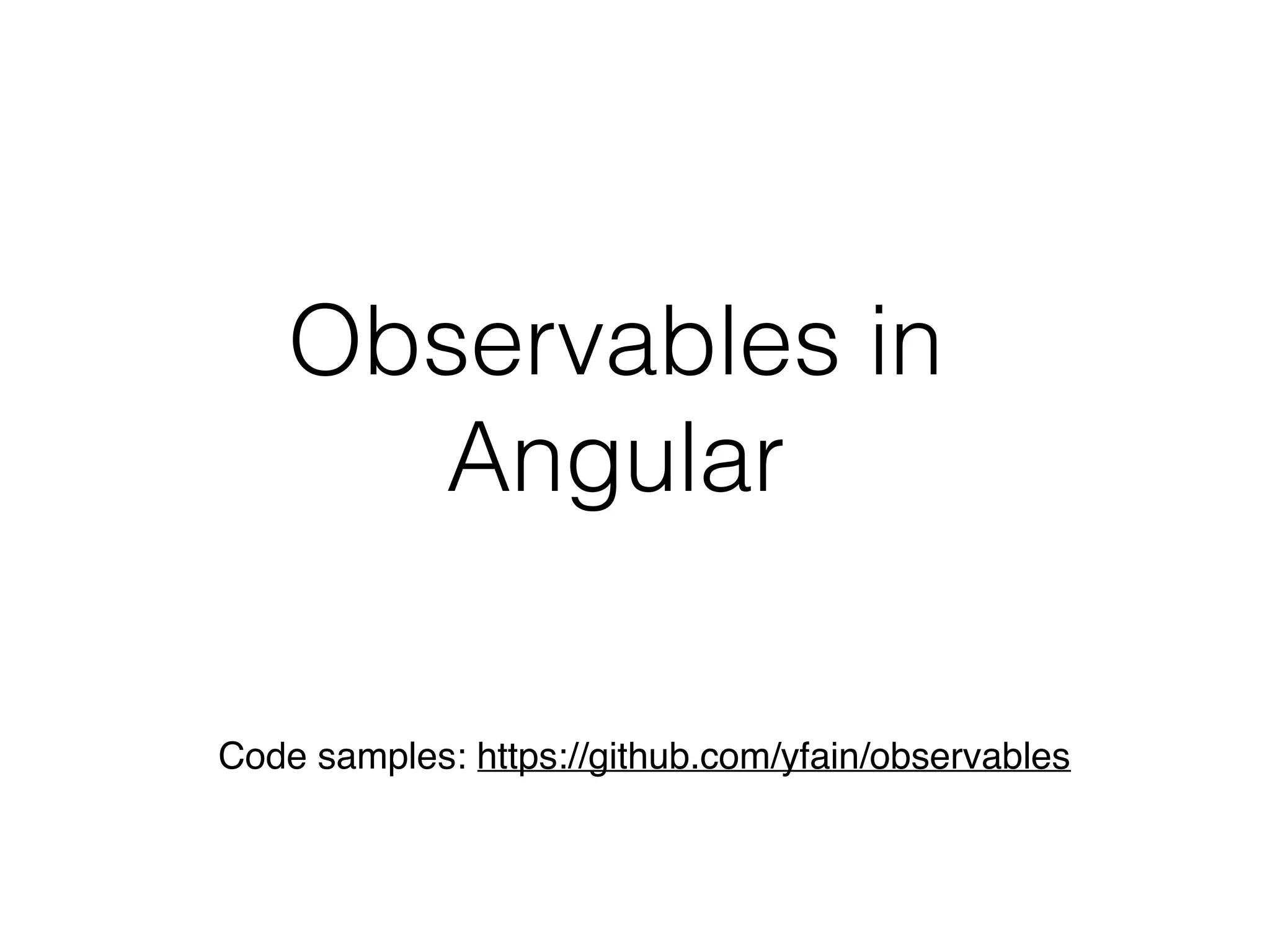
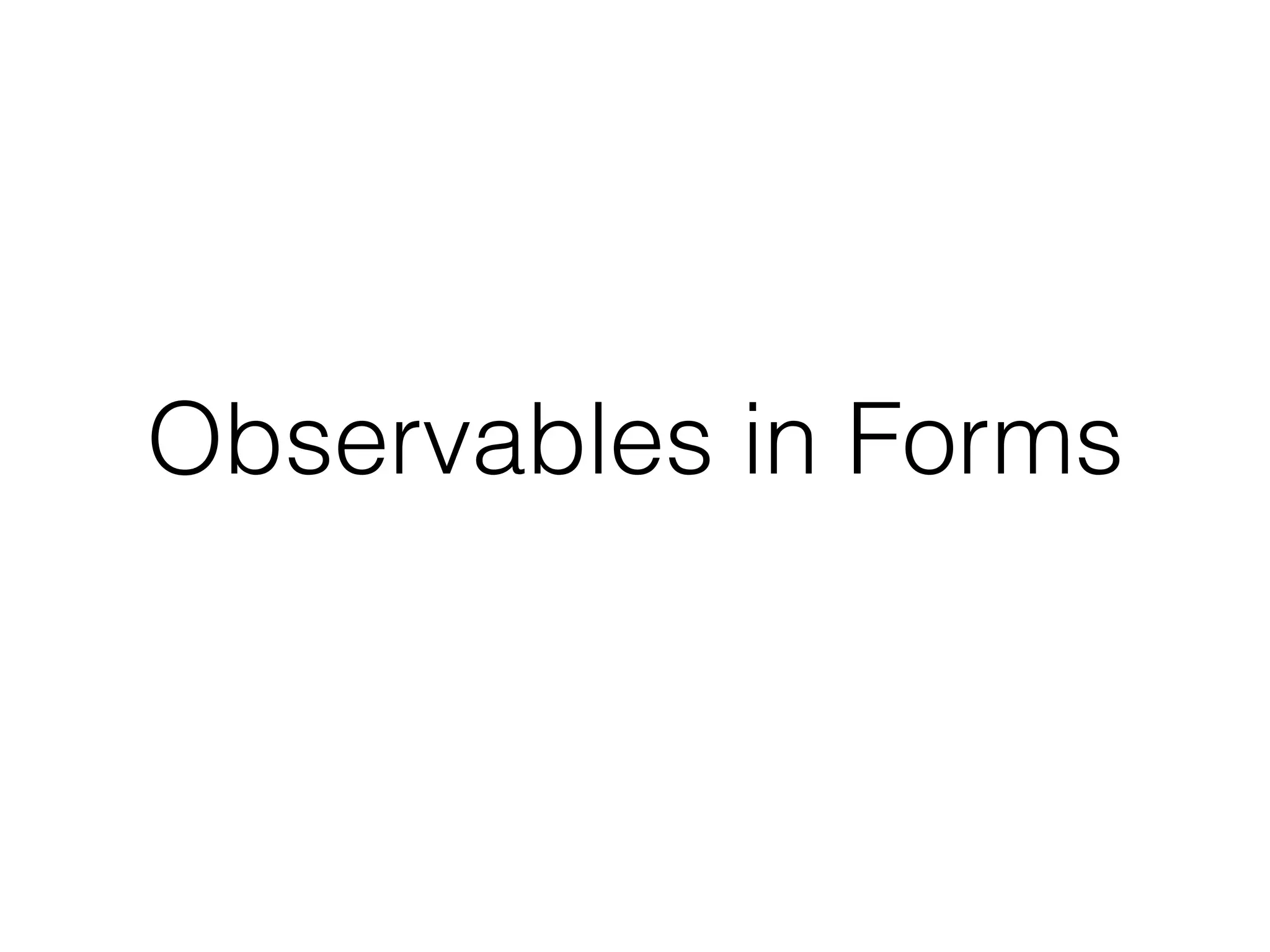
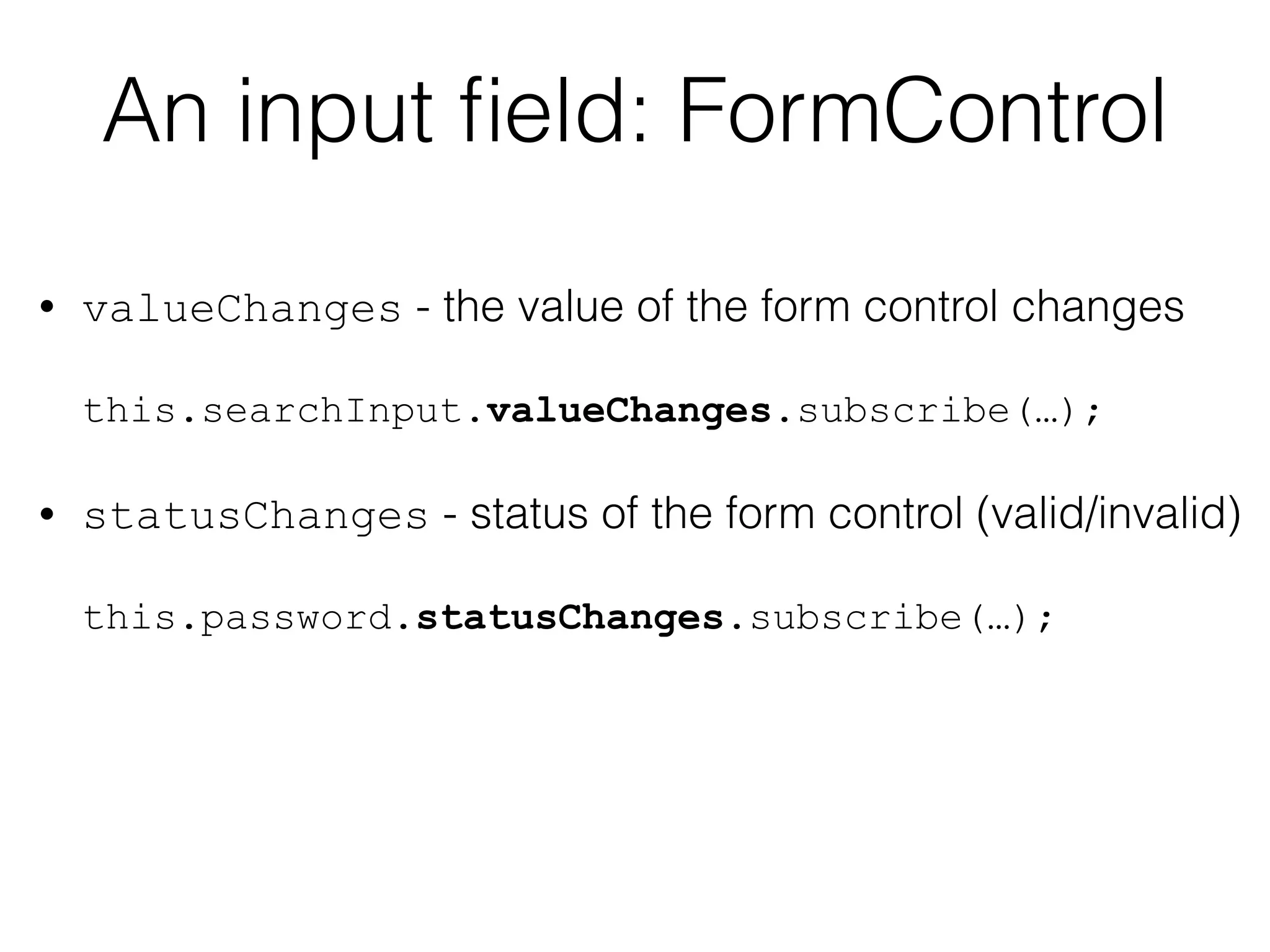
![Observable Events in Angular forms @Component({
selector: "app",
template: `
<h2>Observable events demo</h2>
<input type="text" placeholder="Enter stock" [formControl]="searchInput">
`
})
class AppComponent {
searchInput: FormControl;
constructor(){
this.searchInput = new FormControl('');
this.searchInput.valueChanges
.debounceTime(500)
.subscribe(stock => this.getStockQuoteFromServer(stock));
}
getStockQuoteFromServer(stock) {
console.log(`The price of ${stock} is ${100*Math.random().toFixed(4)}`);
}
} Observable](https://image.slidesharecdn.com/observablesdevnexus-170307050850/75/Reactive-programming-in-Angular-2-36-2048.jpg)
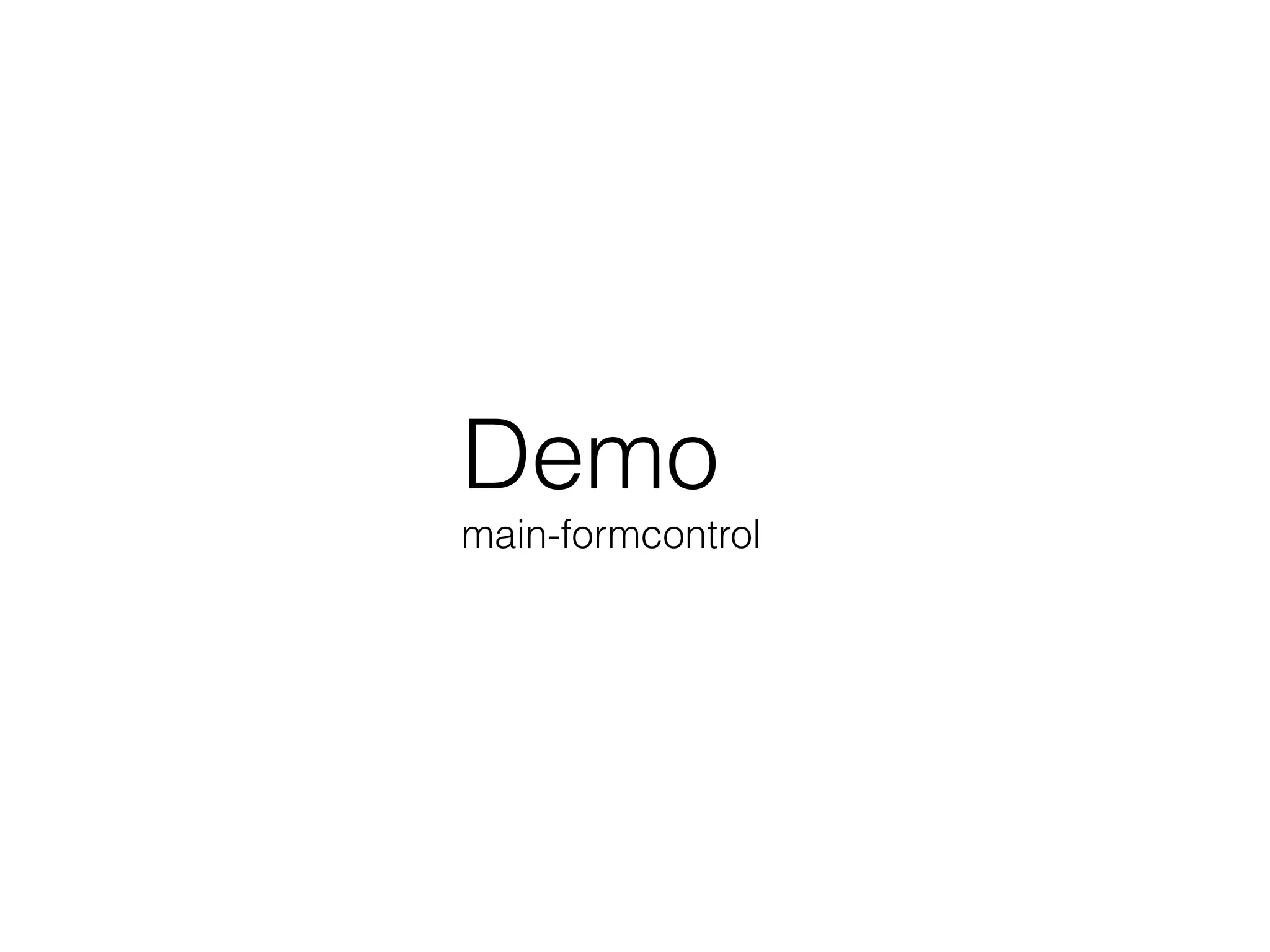
![Http and Observables
class AppComponent {
products: Array<string> = [];
constructor(private http: Http) {
this.http.get(‘/products')
.map(res => res.json())
.subscribe(
data => {
this.products=data;
},
err =>
console.log("Can't get products. Error code: %s, URL: %s ",
err.status, err.url),
() => console.log('Product(s) are retrieved')
);
}
} O b s e r v e r](https://image.slidesharecdn.com/observablesdevnexus-170307050850/75/Reactive-programming-in-Angular-2-38-2048.jpg)
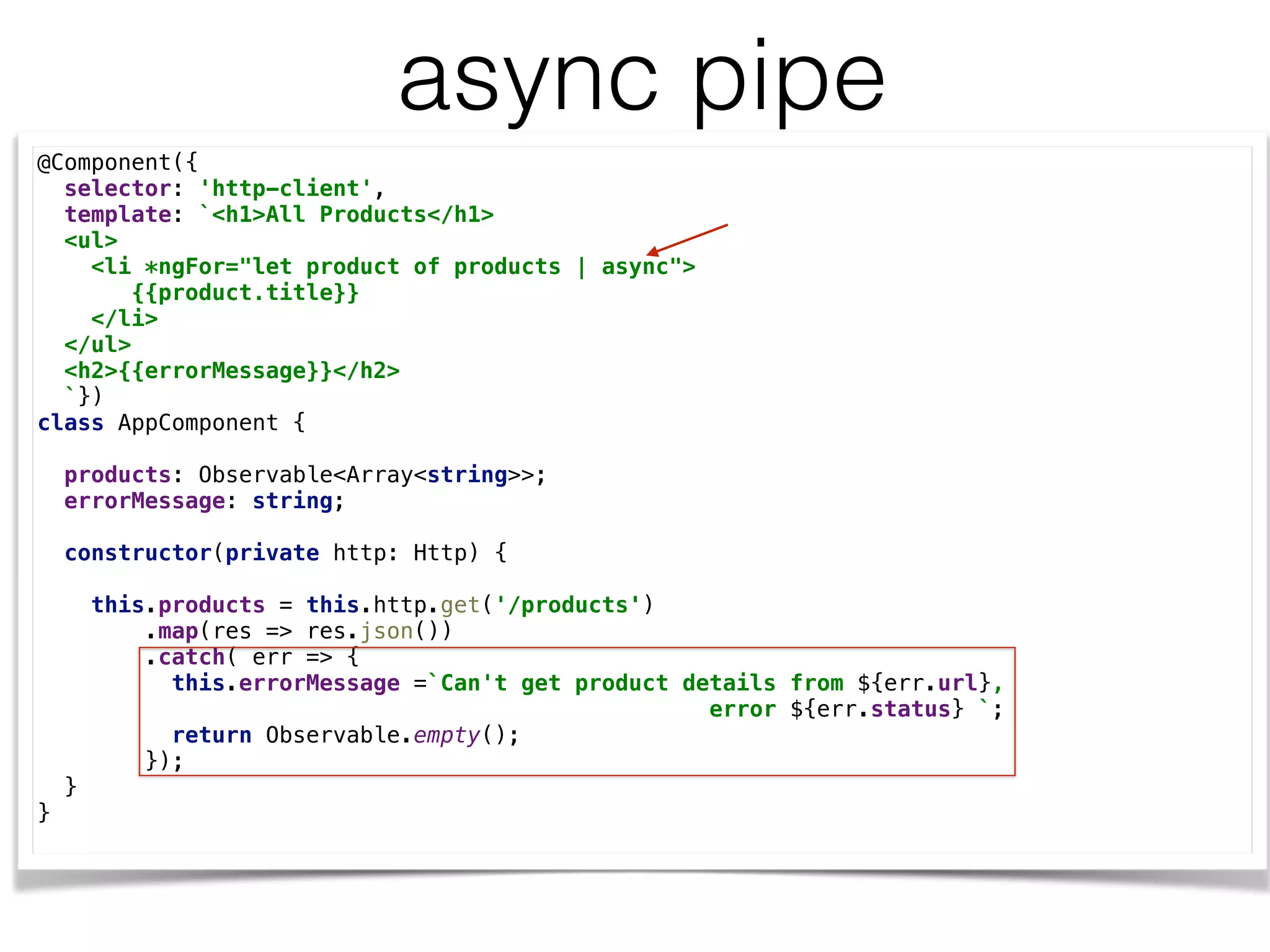
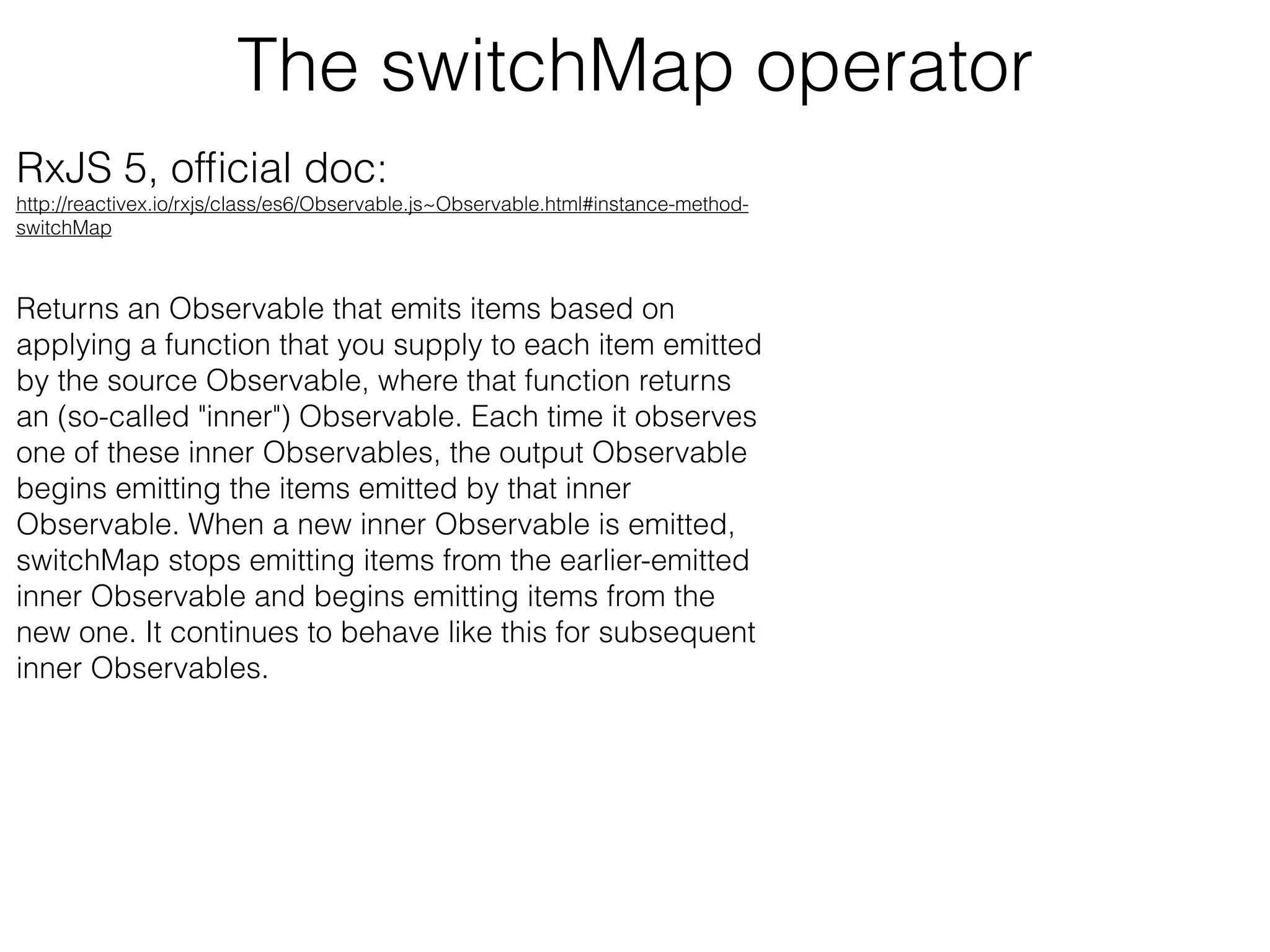
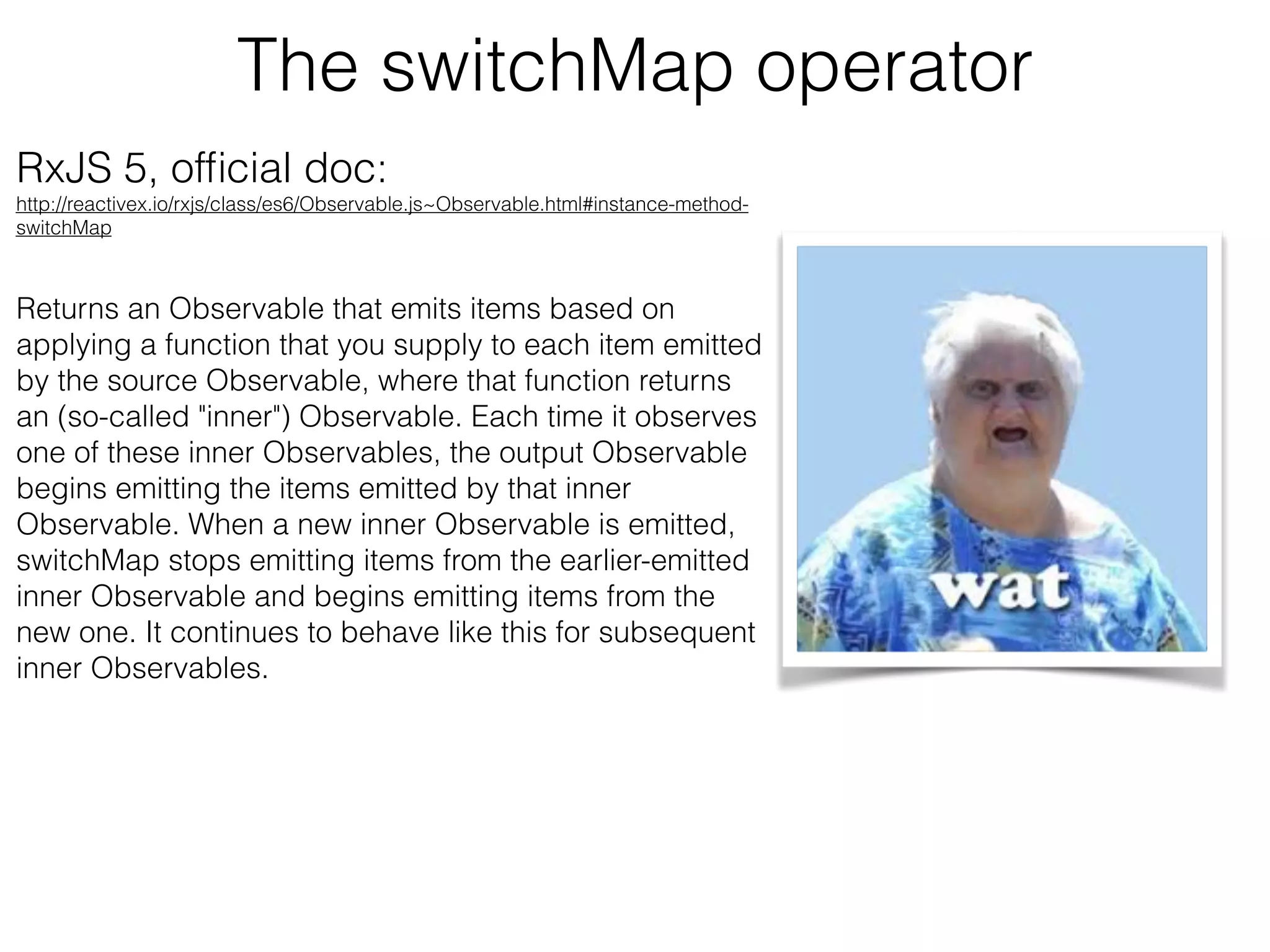
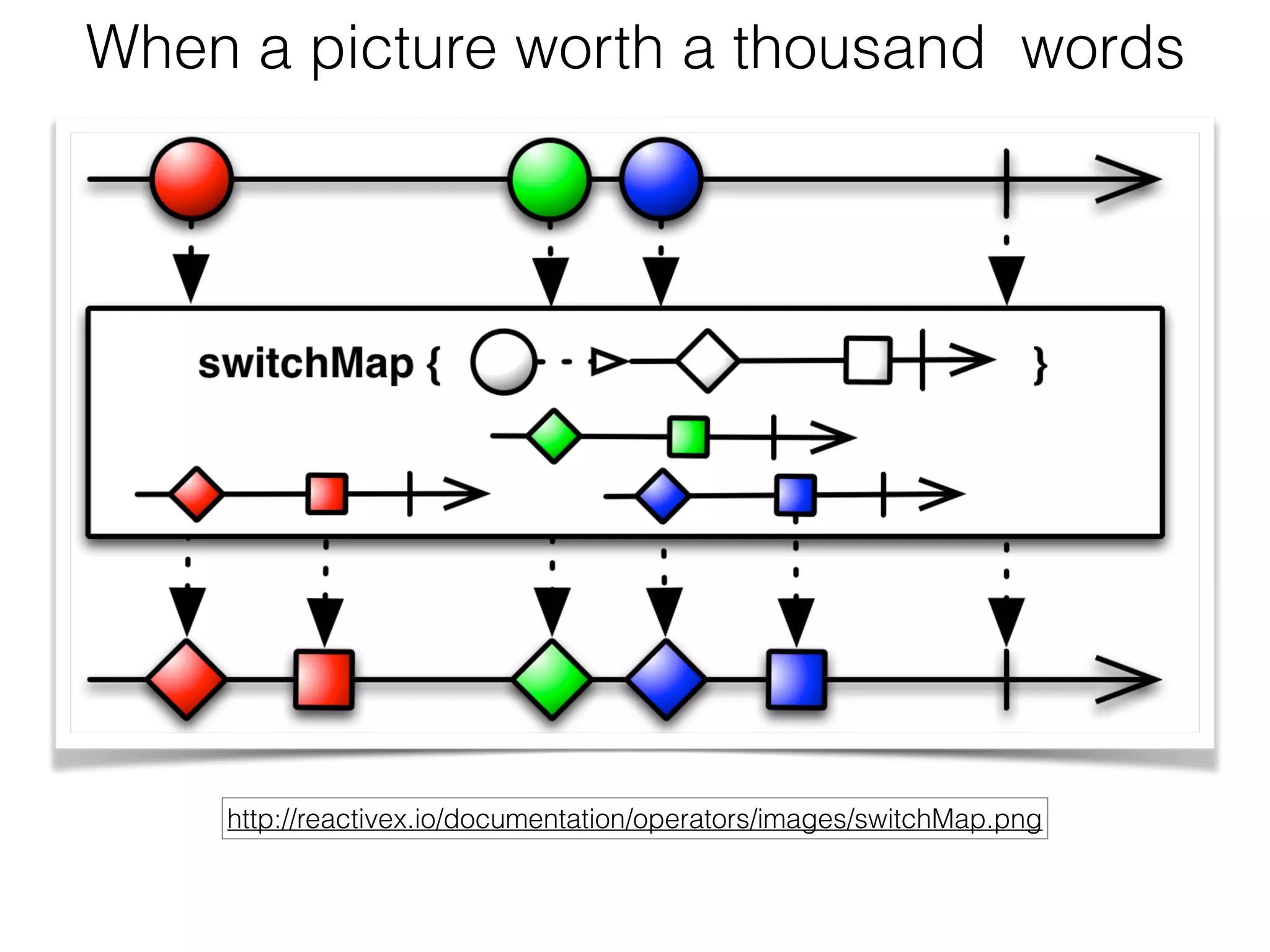
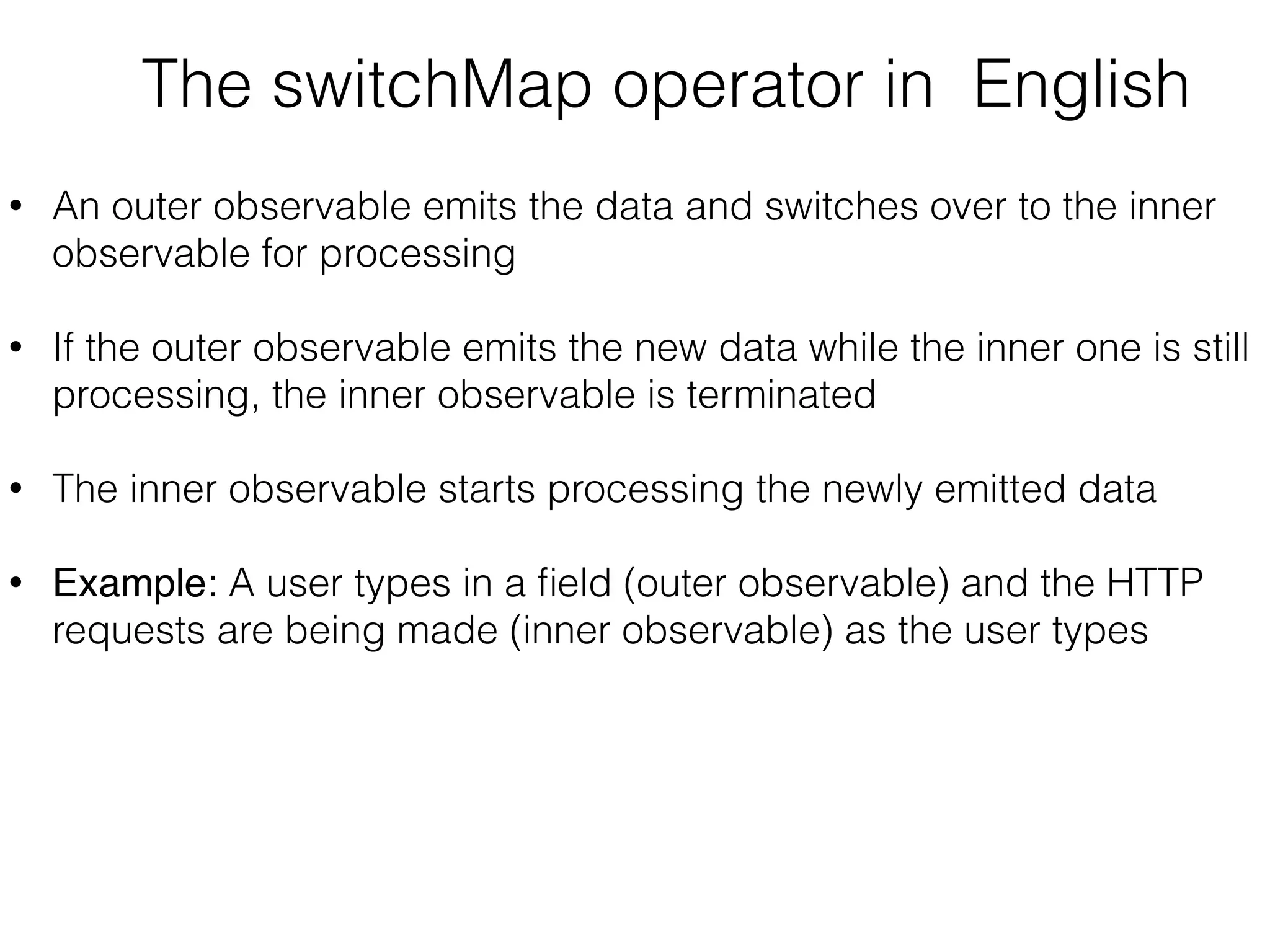
![Killing HTTP requests with switchMap <input type="text" placeholder="Enter city" [formControl]="searchInput"> … this.searchInput.valueChanges
.debounceTime(200)
.switchMap(city => this.getWeather(city))
.subscribe(
res => {
this.temperature =
`Current temperature is ${res.main.temp}F, ` +
`humidity: ${res.main.humidity}%`; },
err => console.log(`Can't get weather. Error code: %s, URL: %s`, err.message, err.url)
);
}
getWeather(city): Observable<Array> {
return this.http.get(this.baseWeatherURL + city + this.urlSuffix)
.map(res => res.json());
} Outer Obs. Inner Obs.](https://image.slidesharecdn.com/observablesdevnexus-170307050850/75/Reactive-programming-in-Angular-2-44-2048.jpg)
